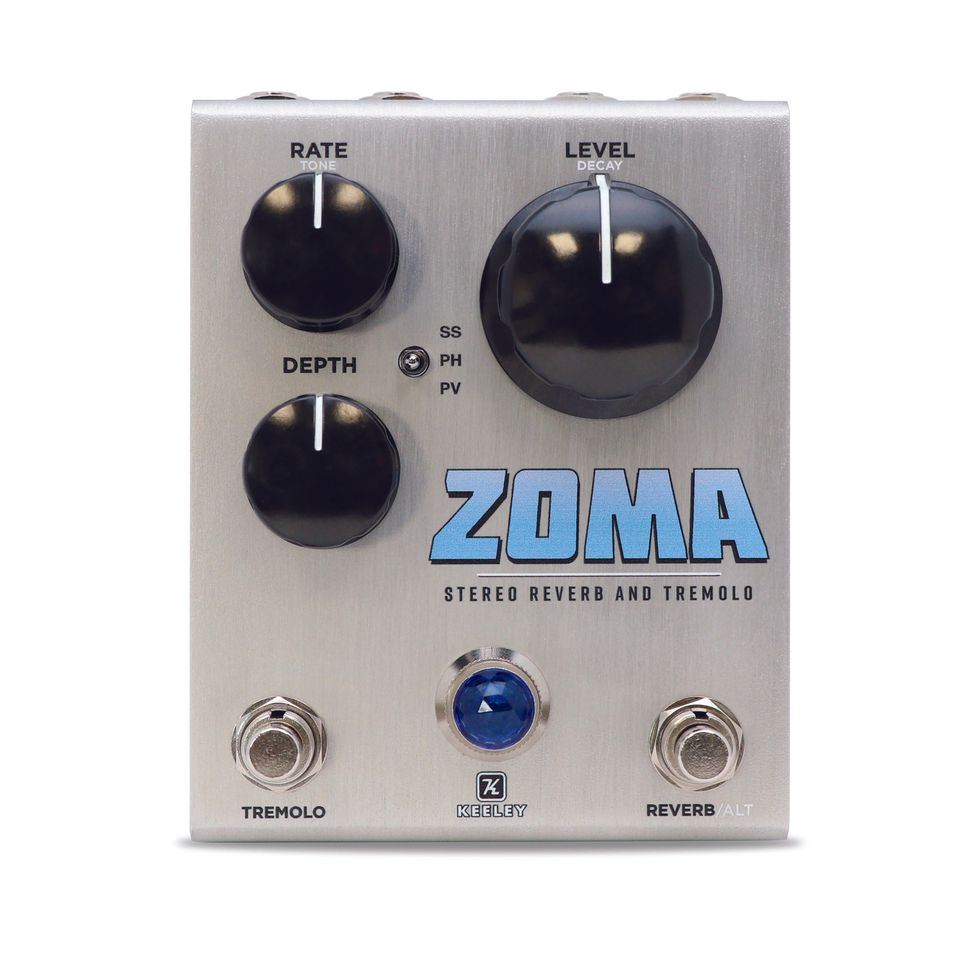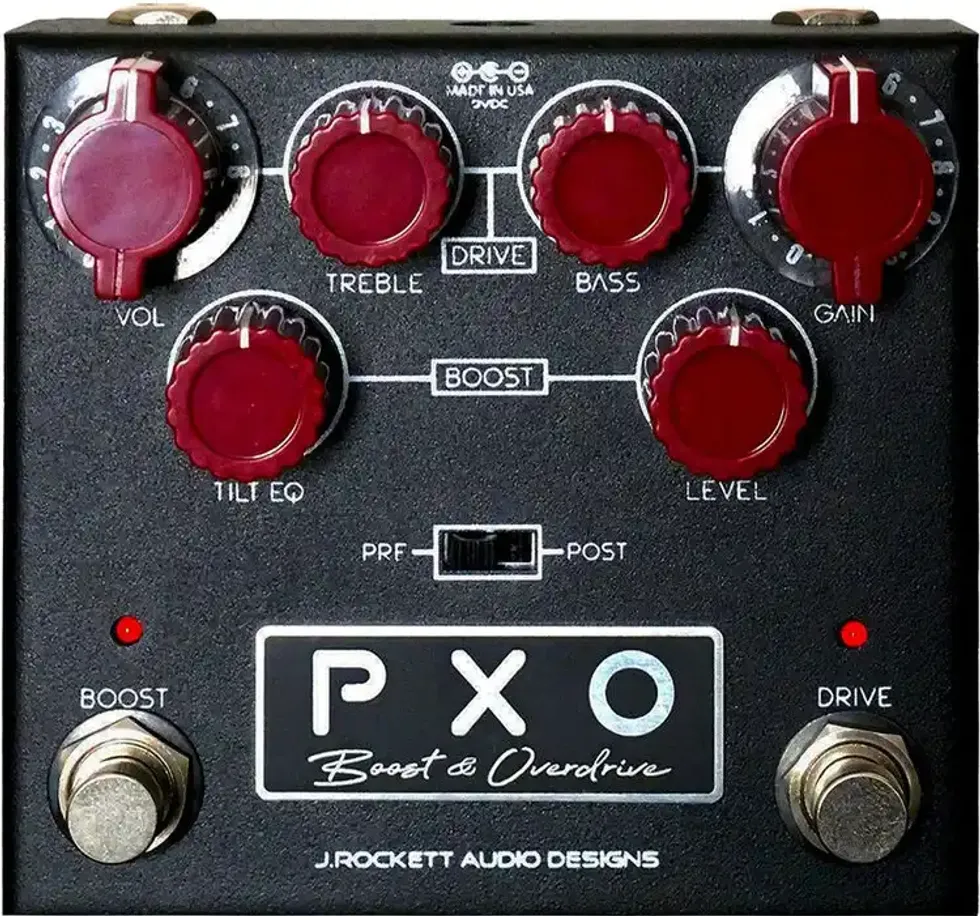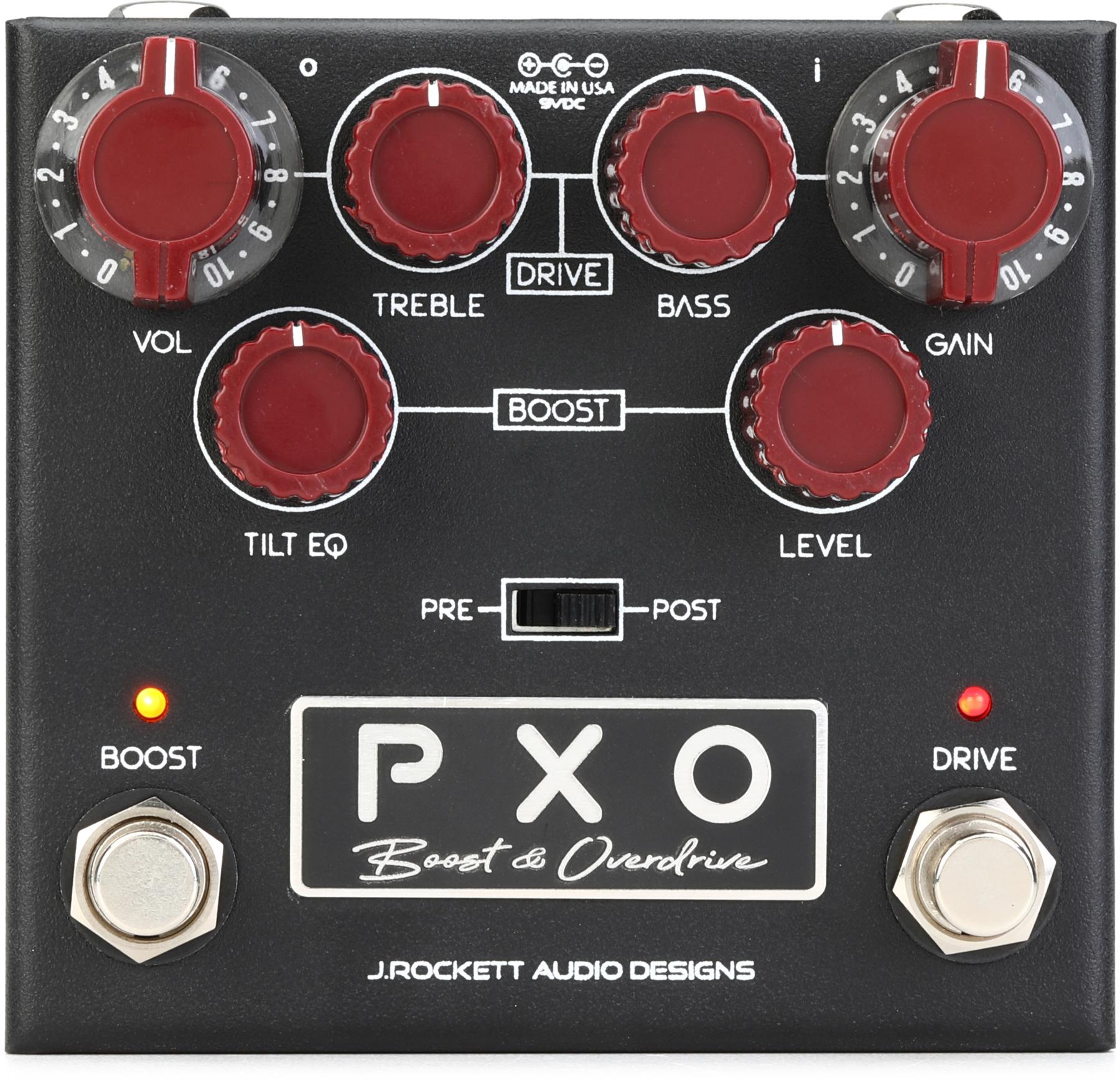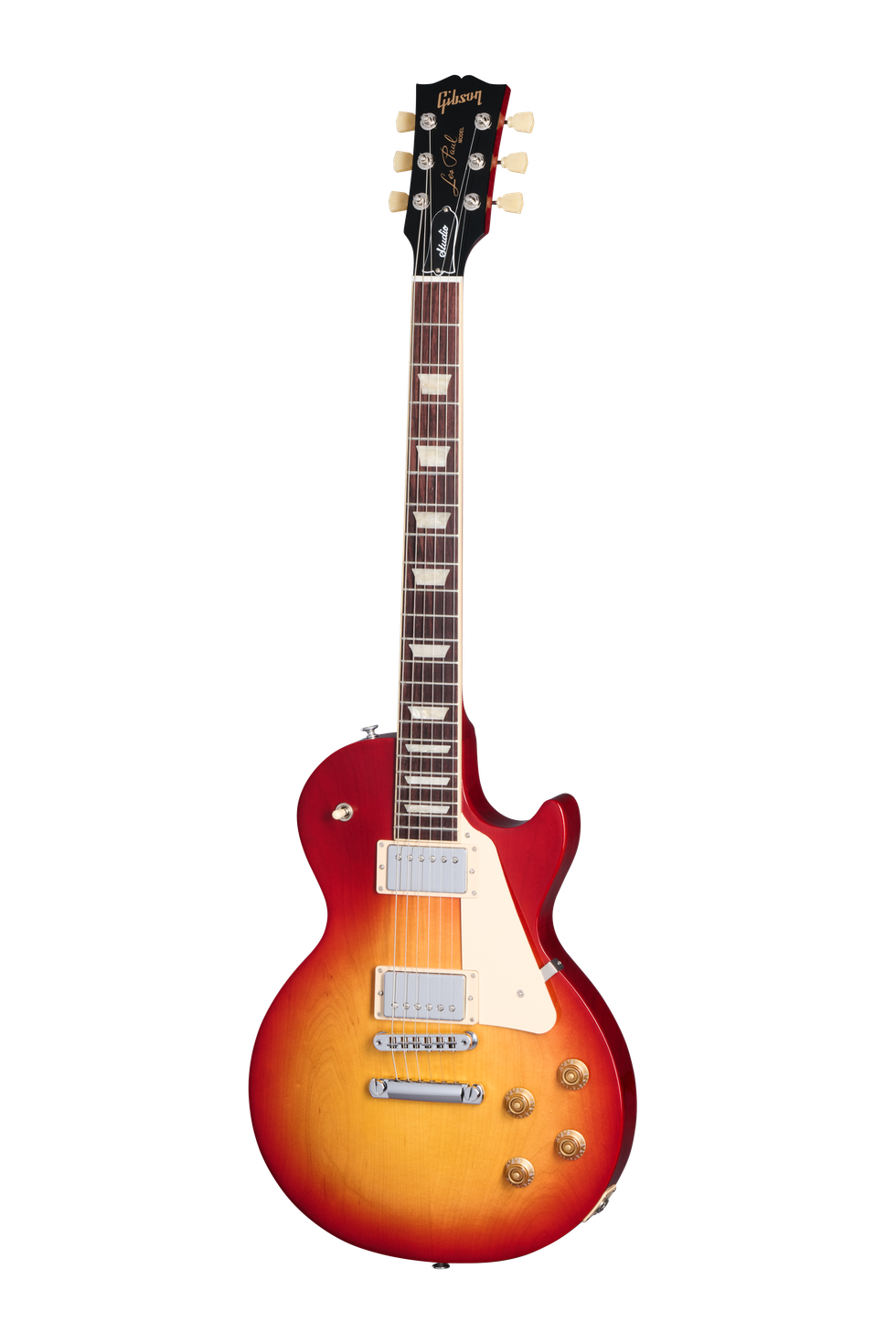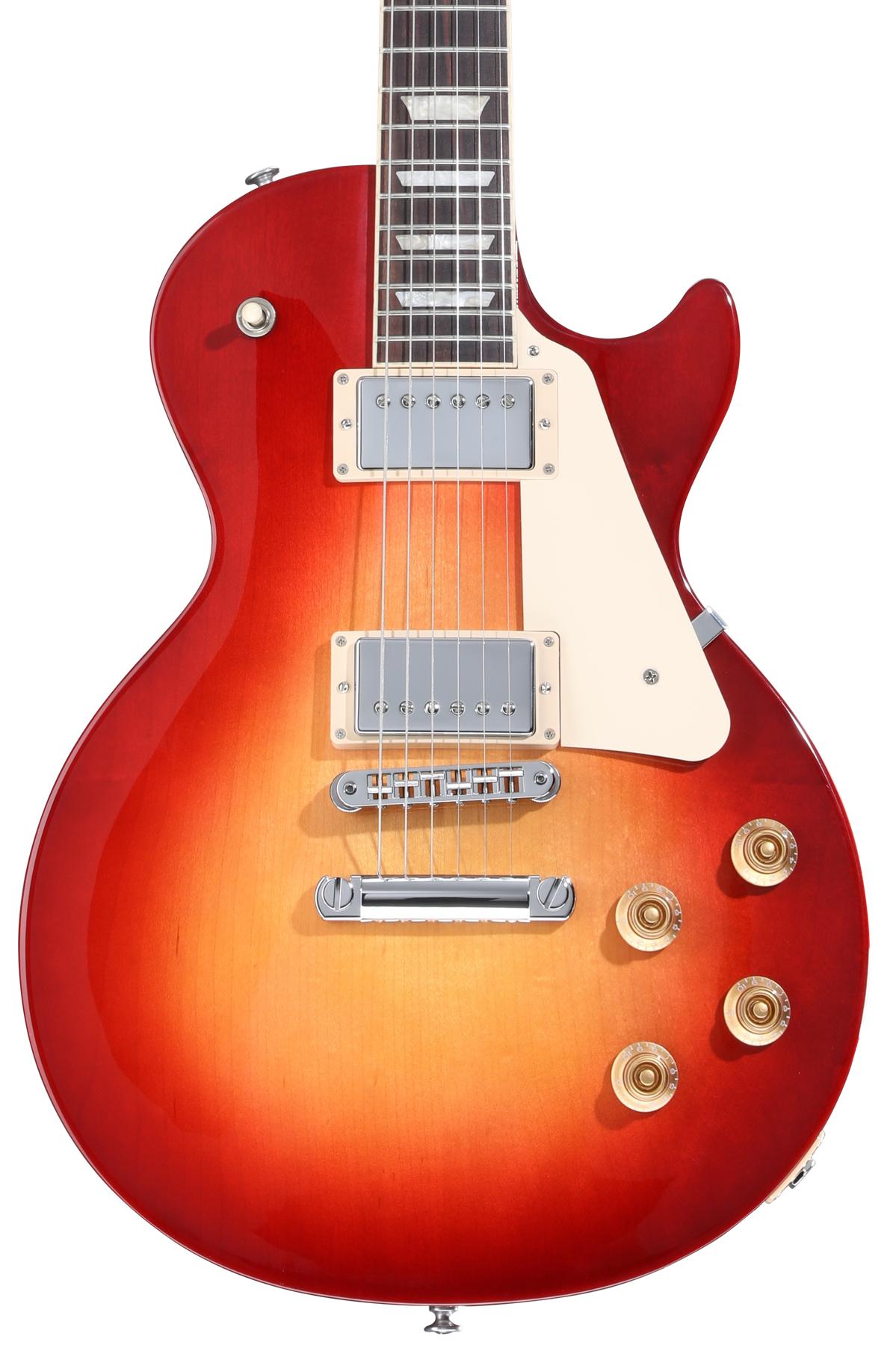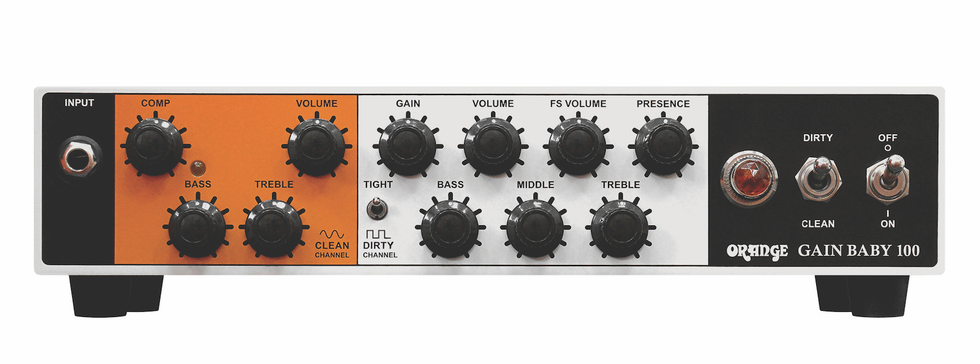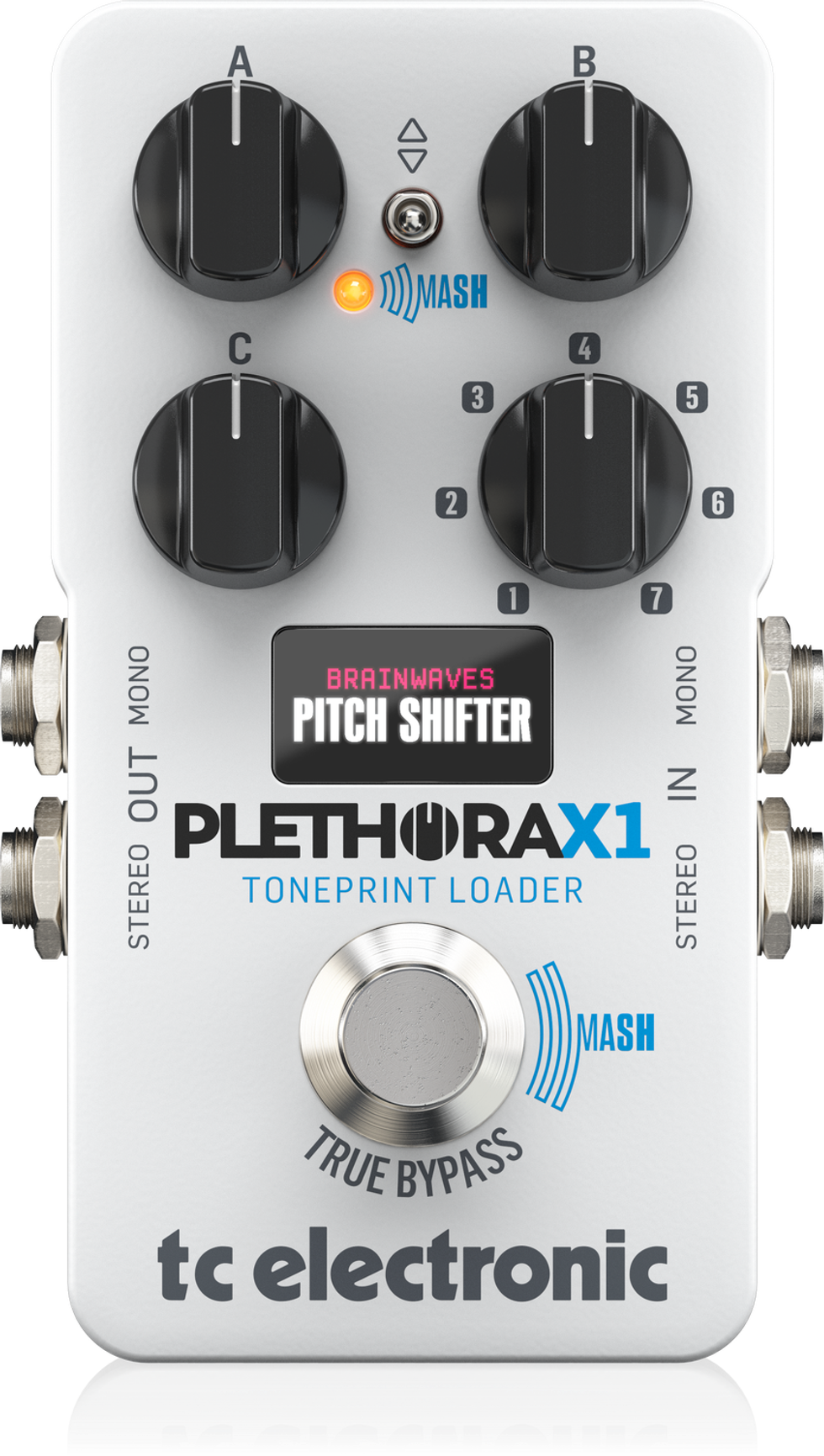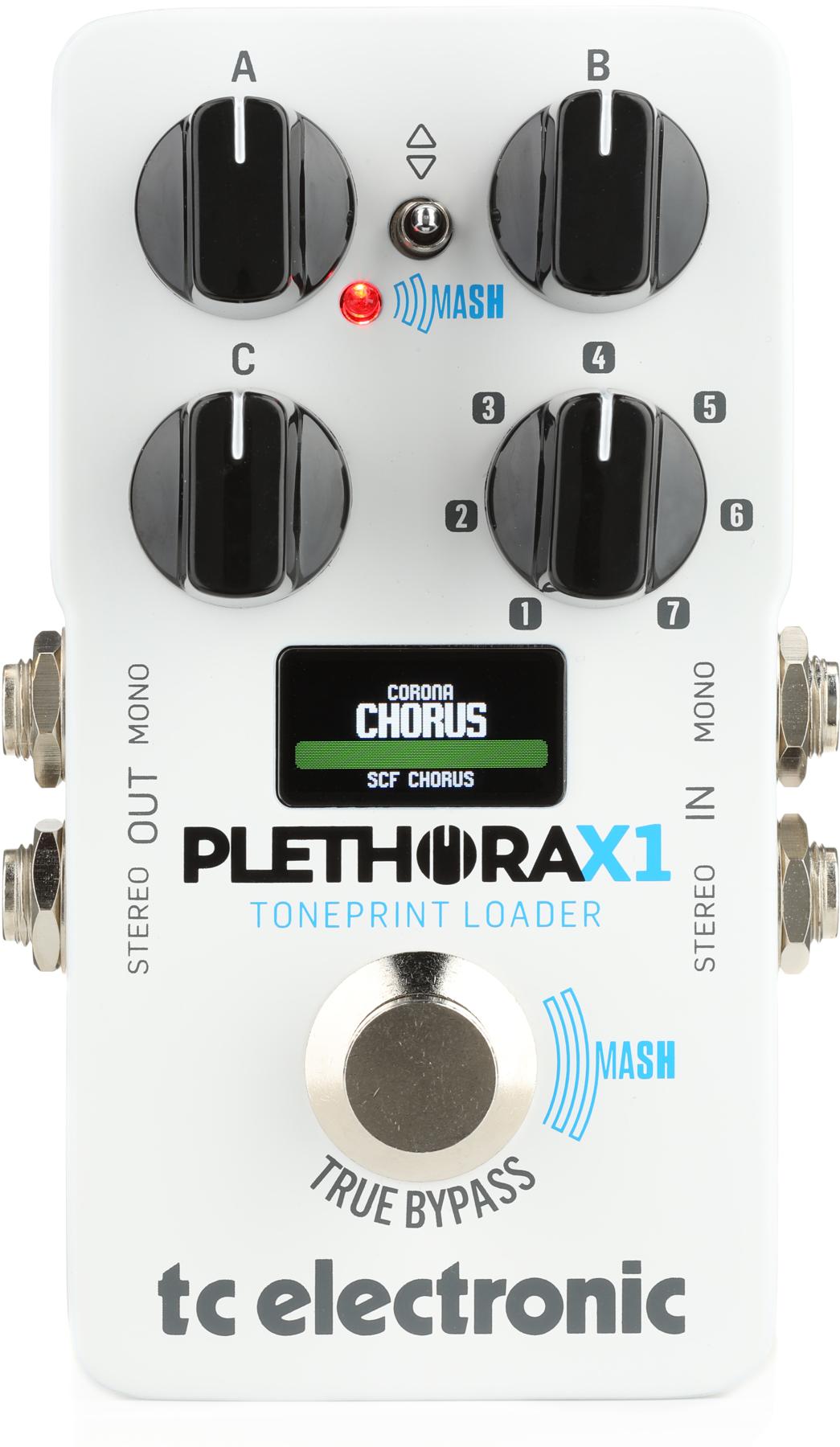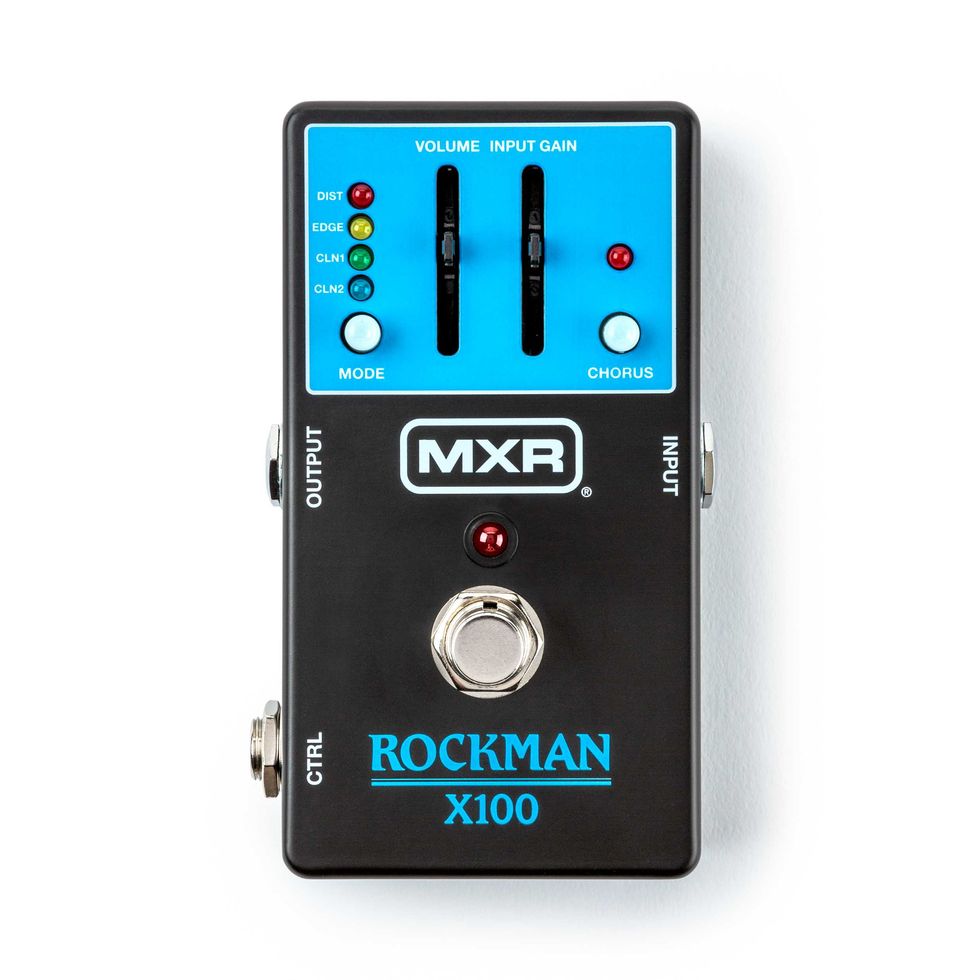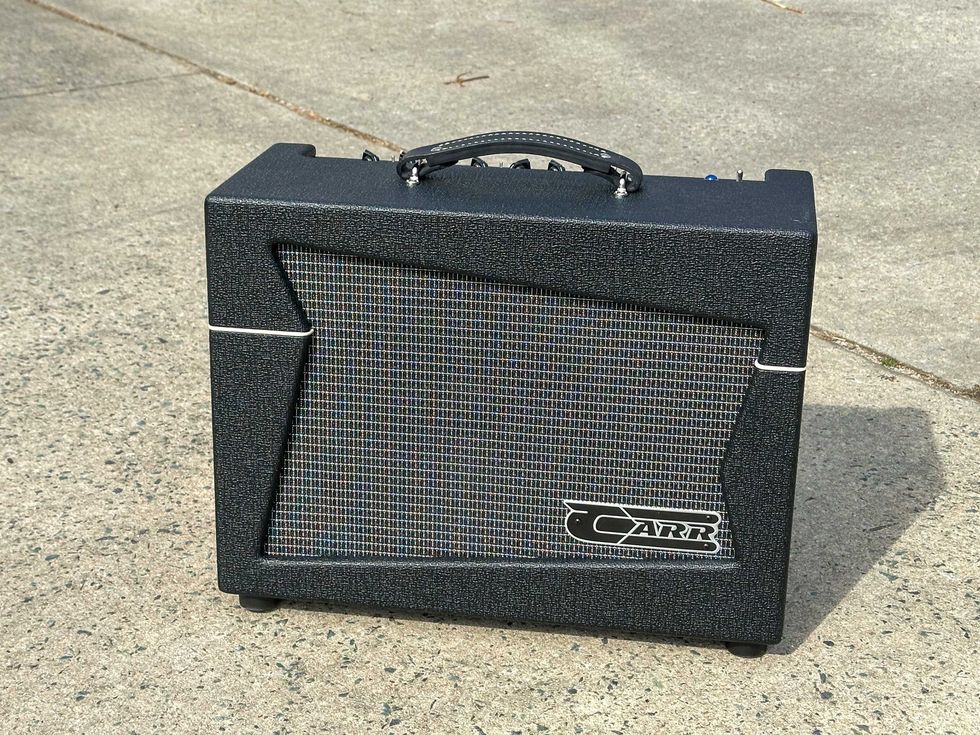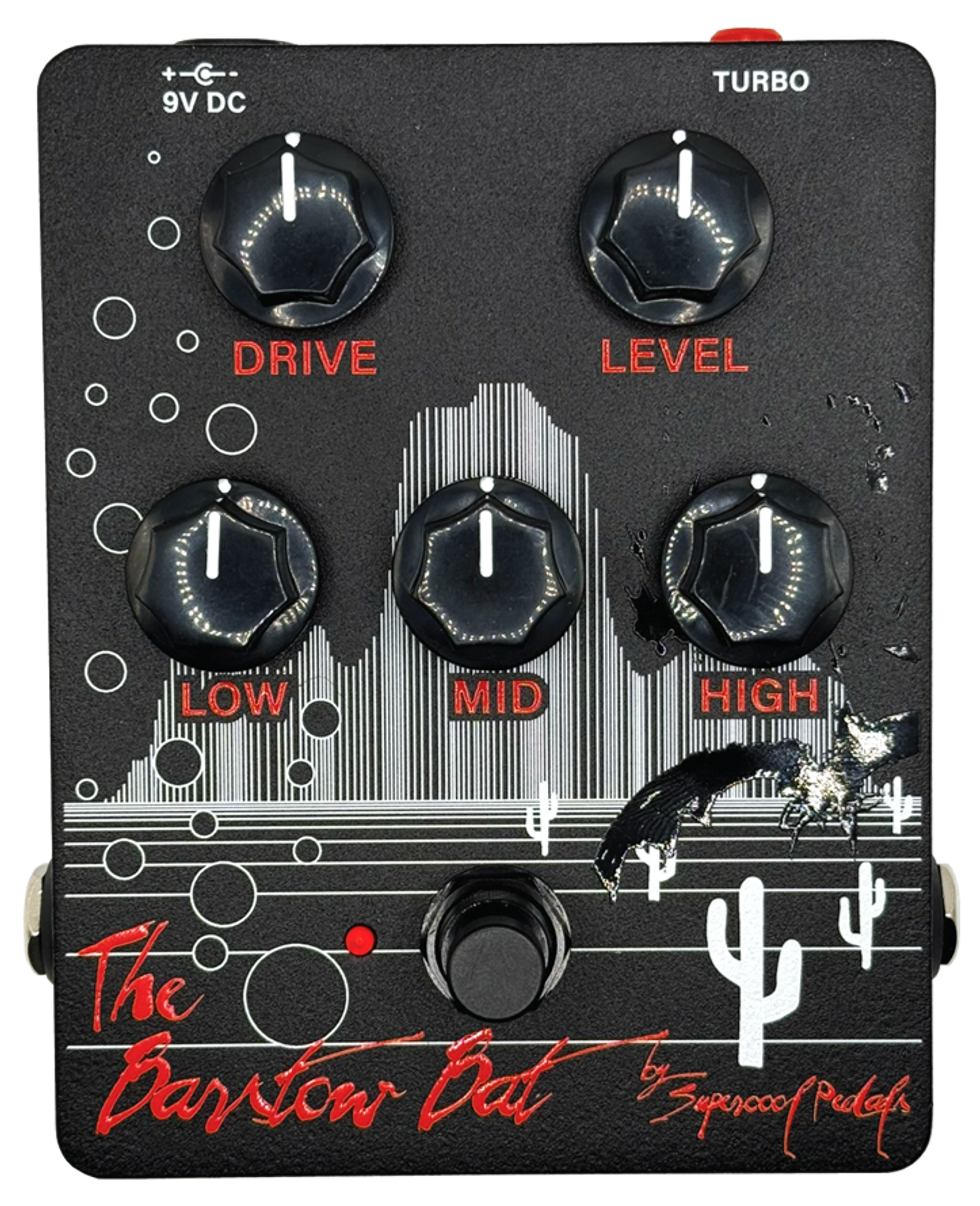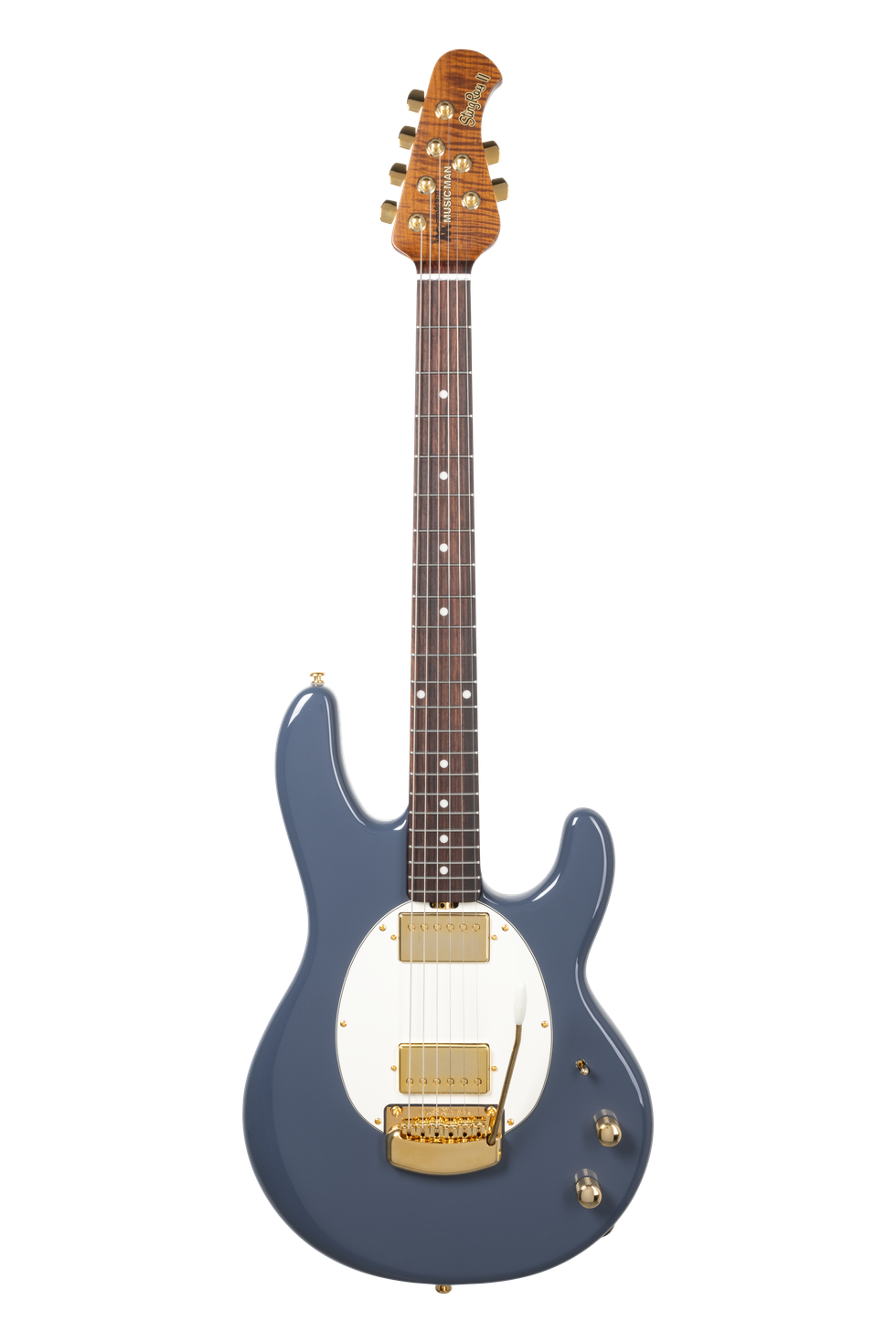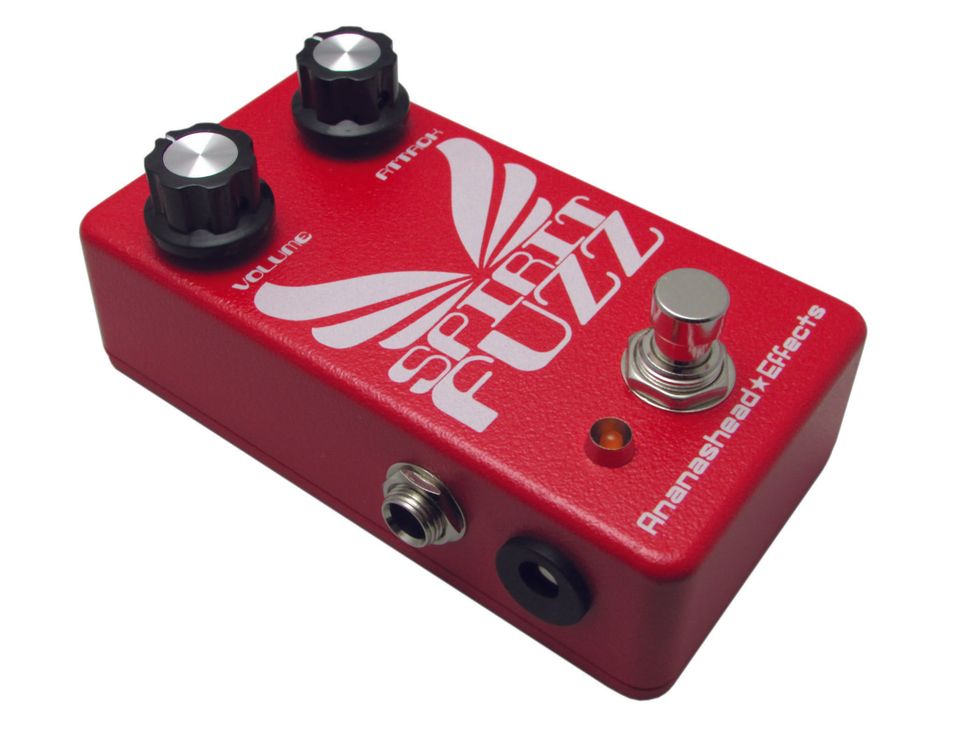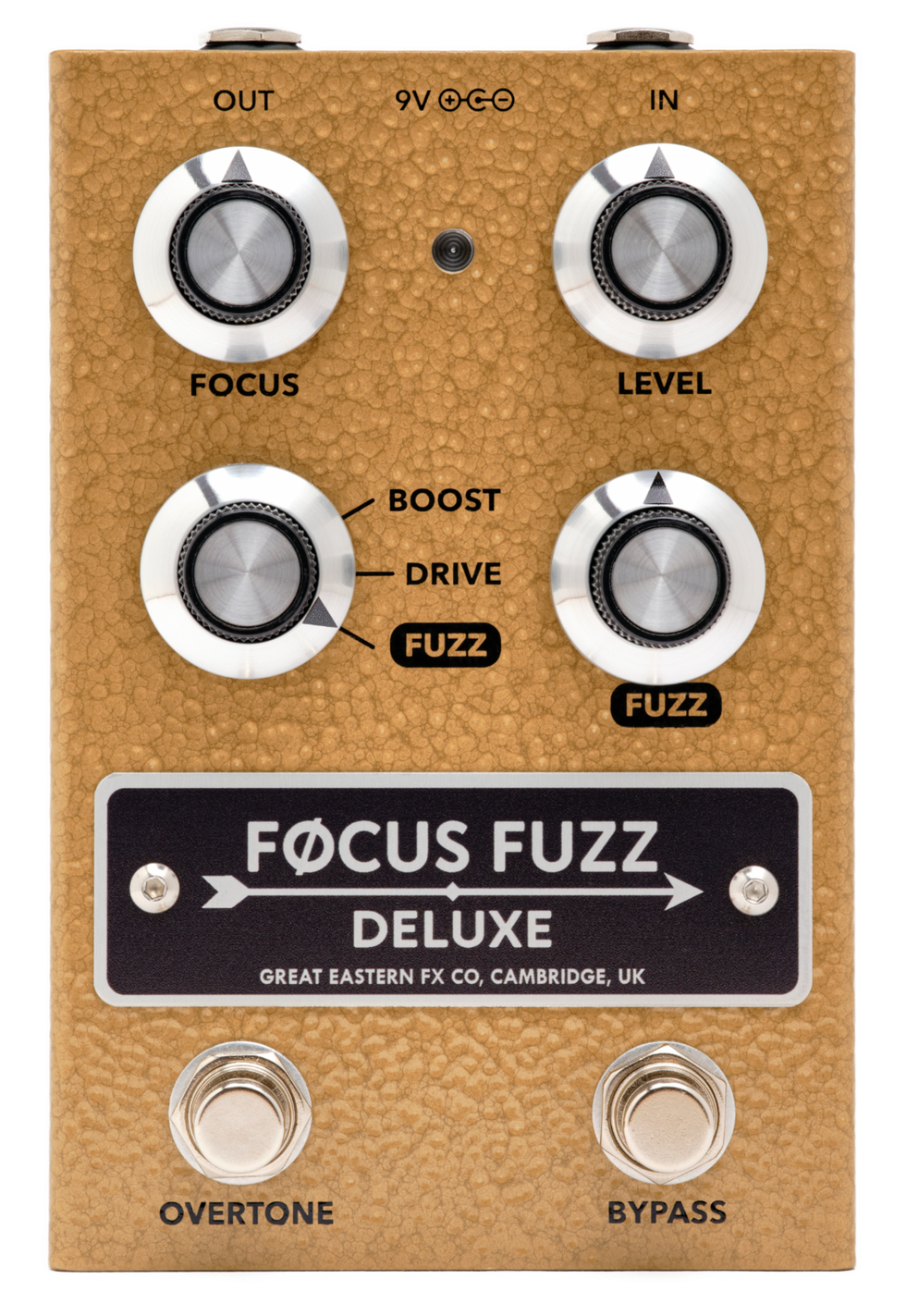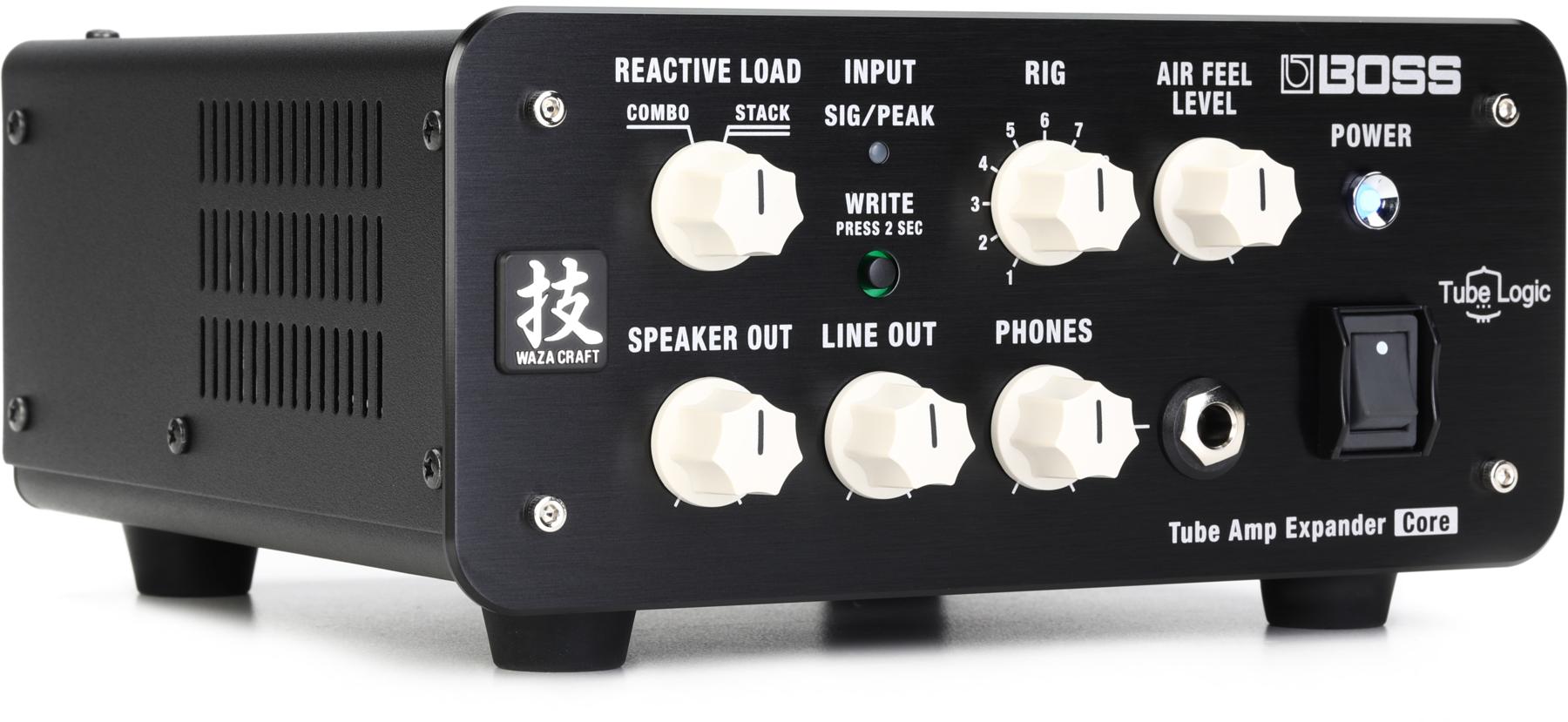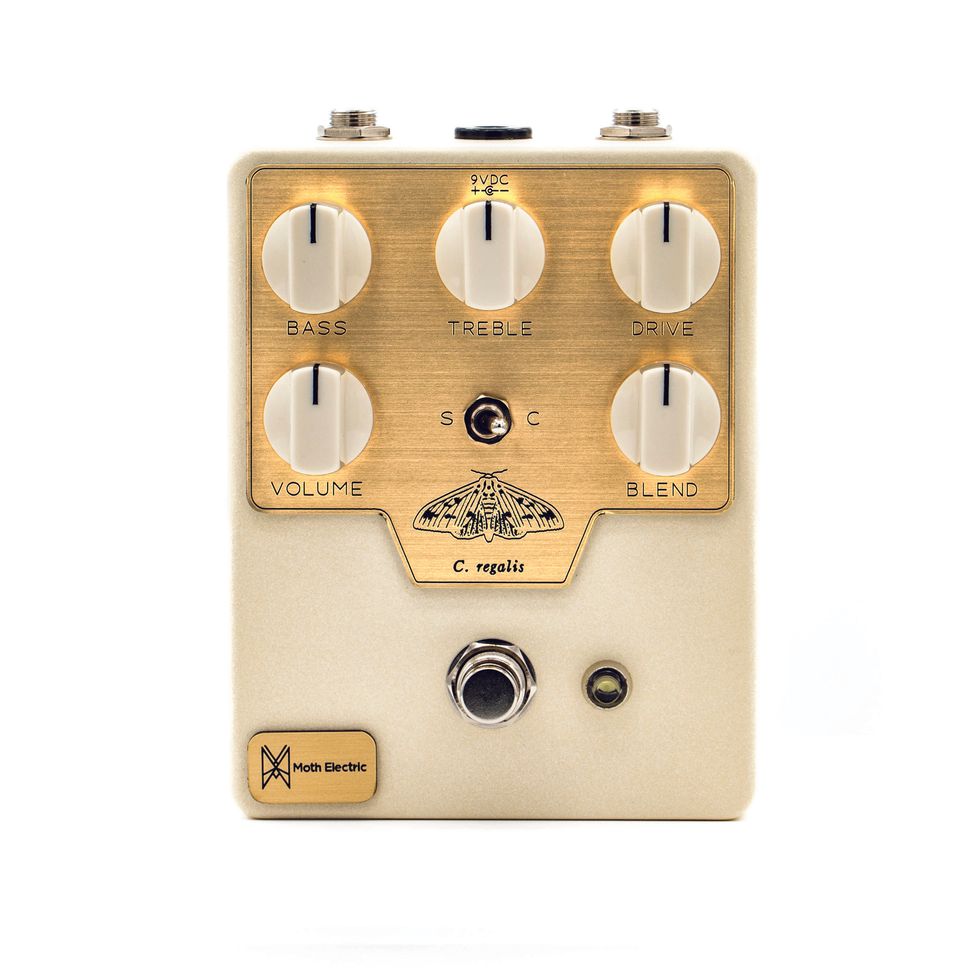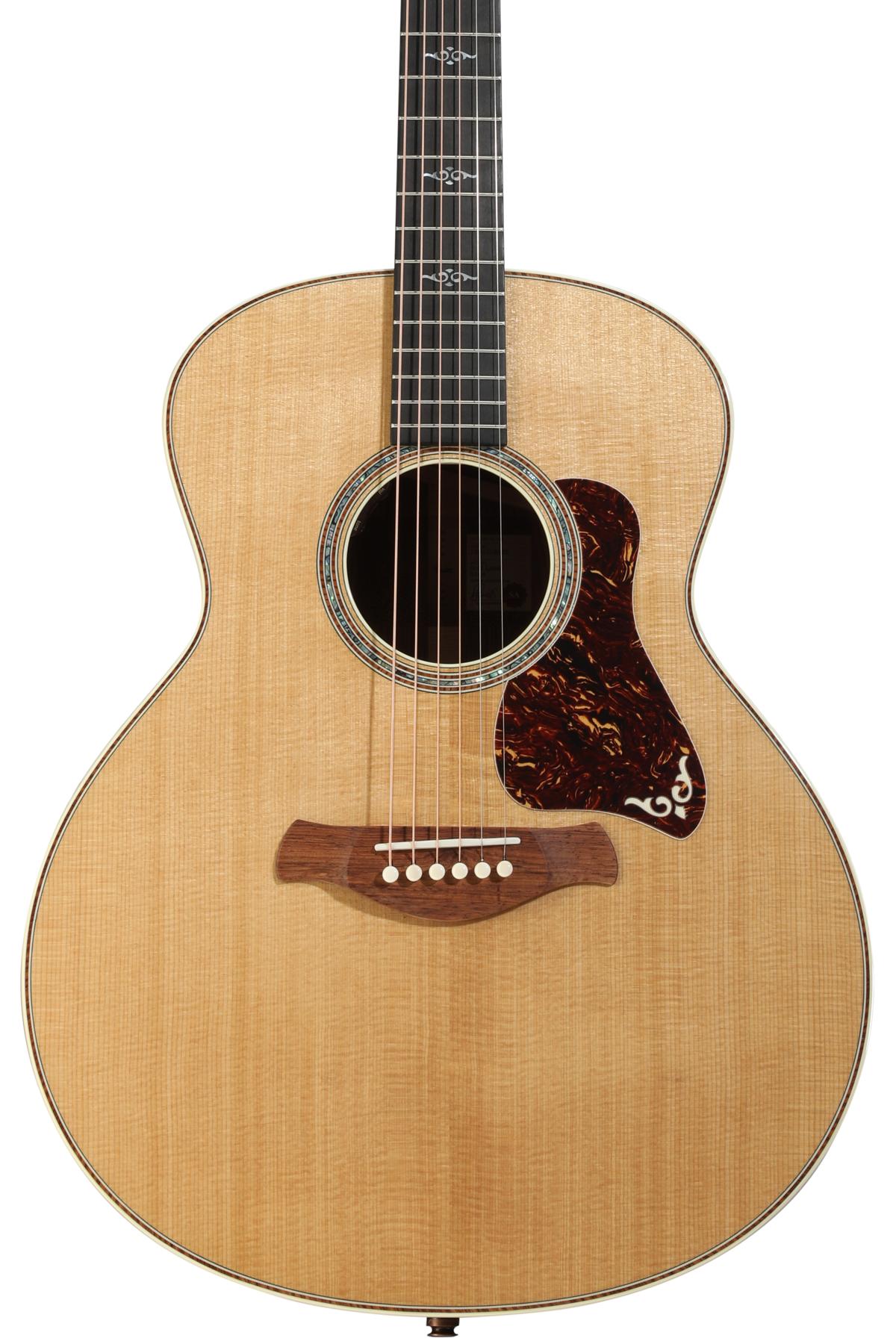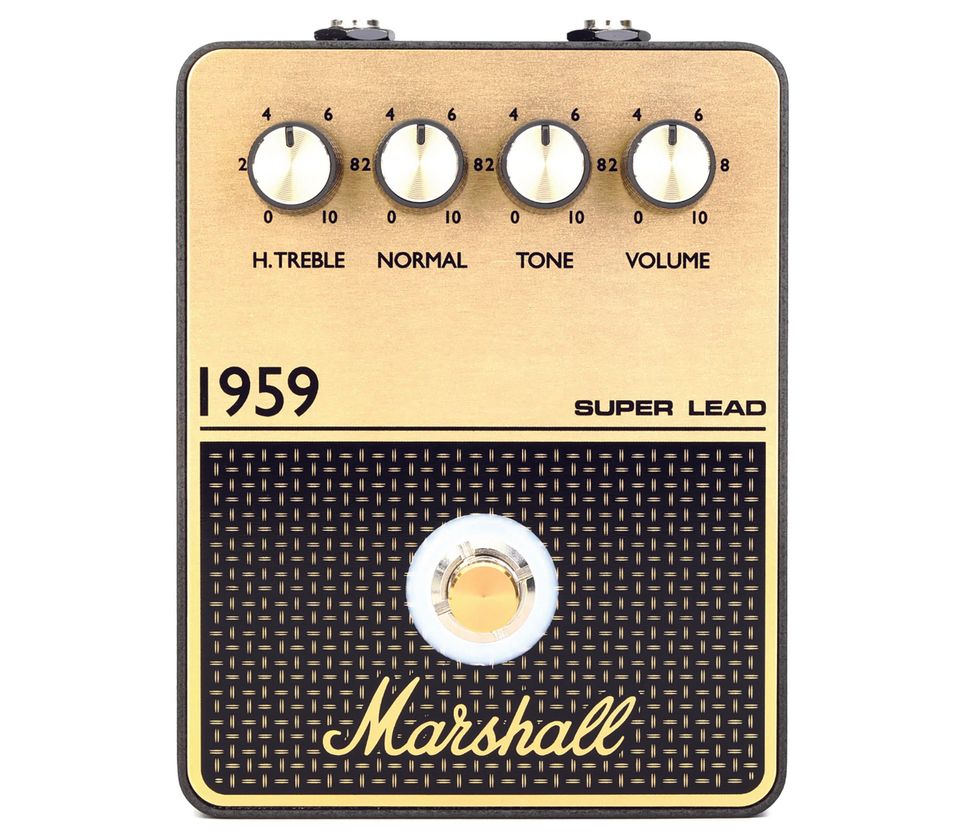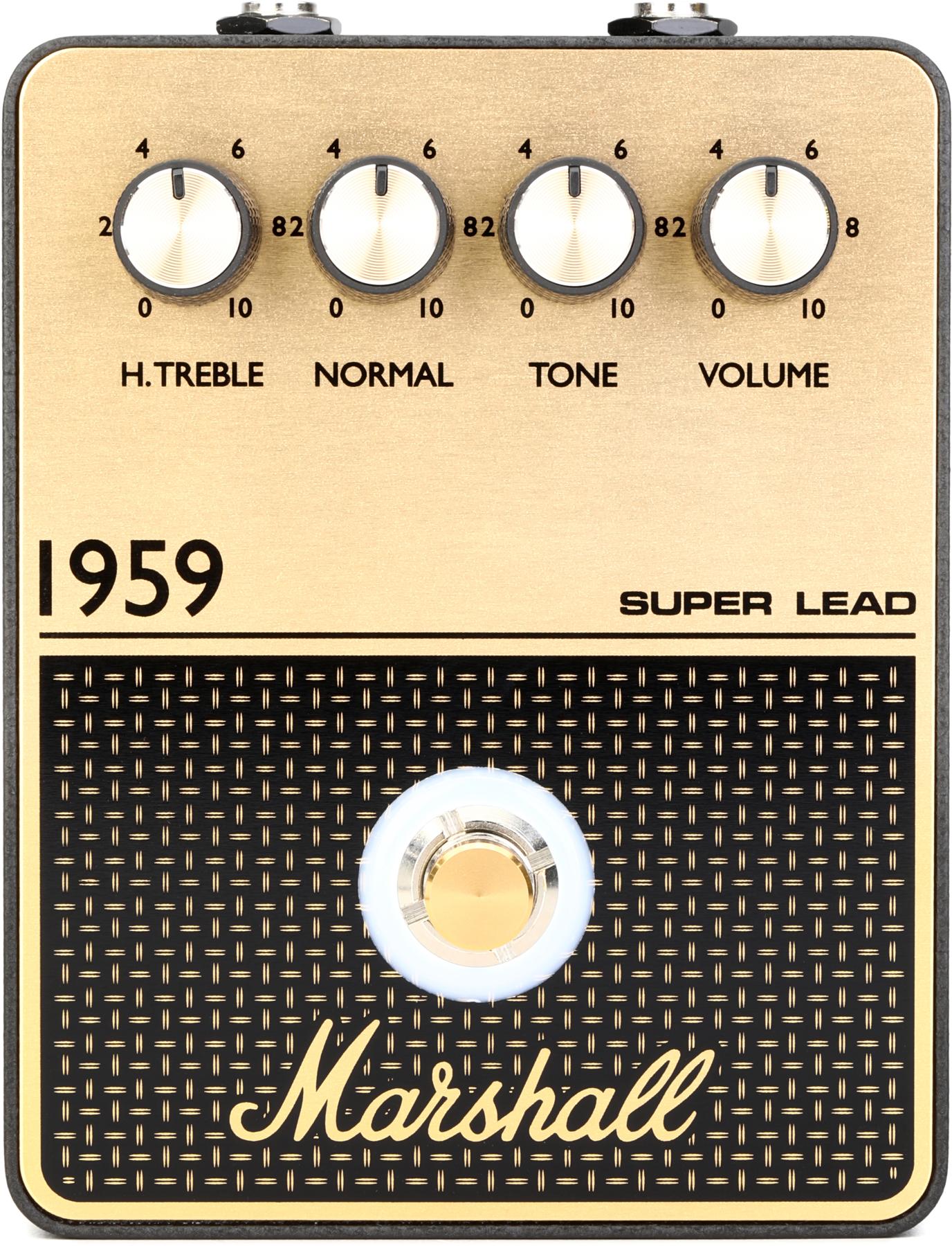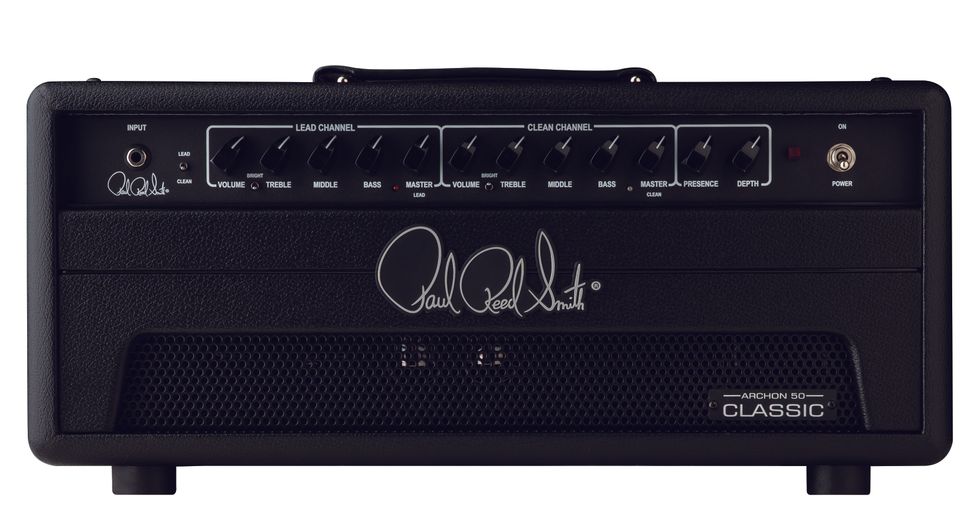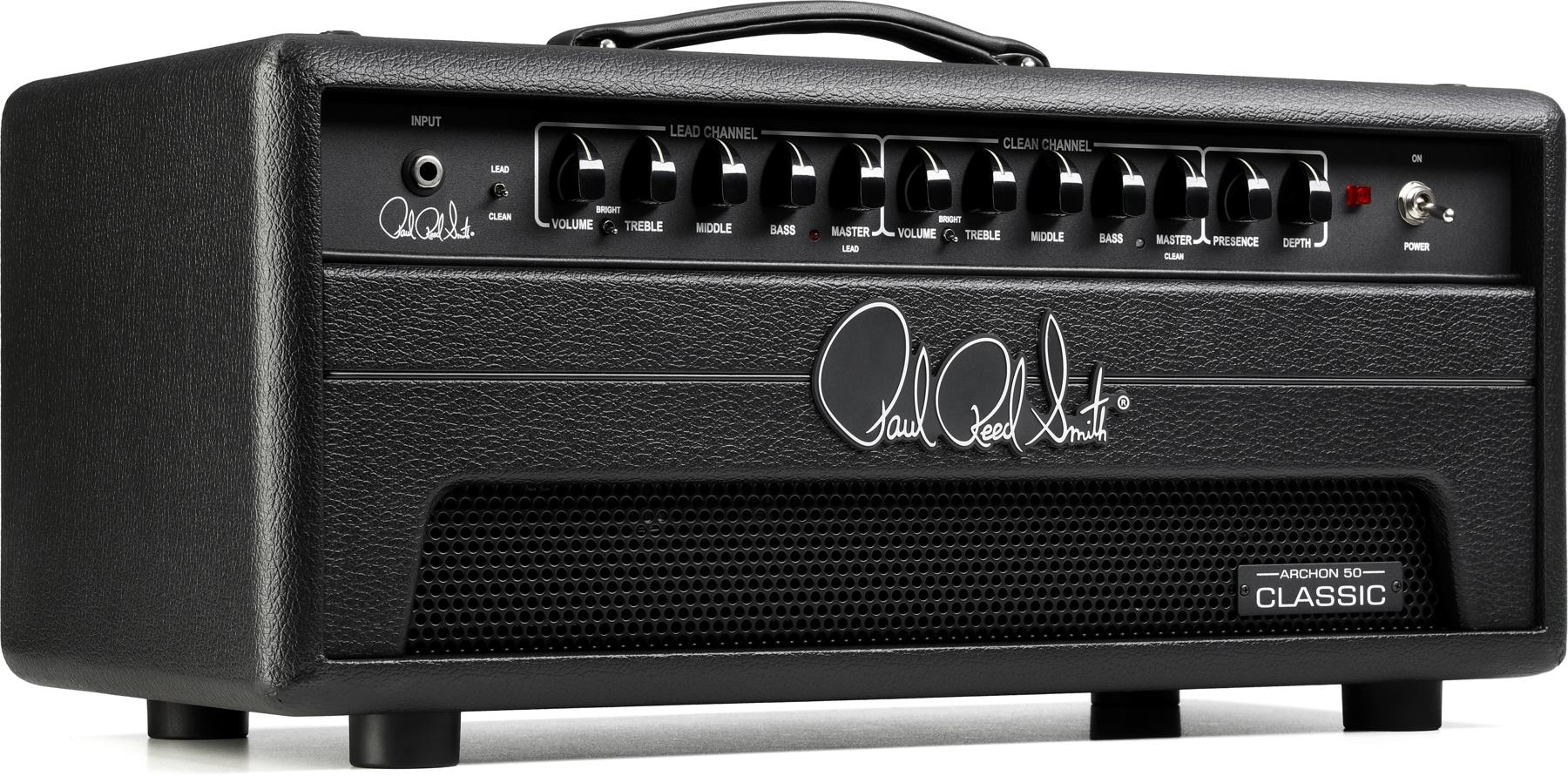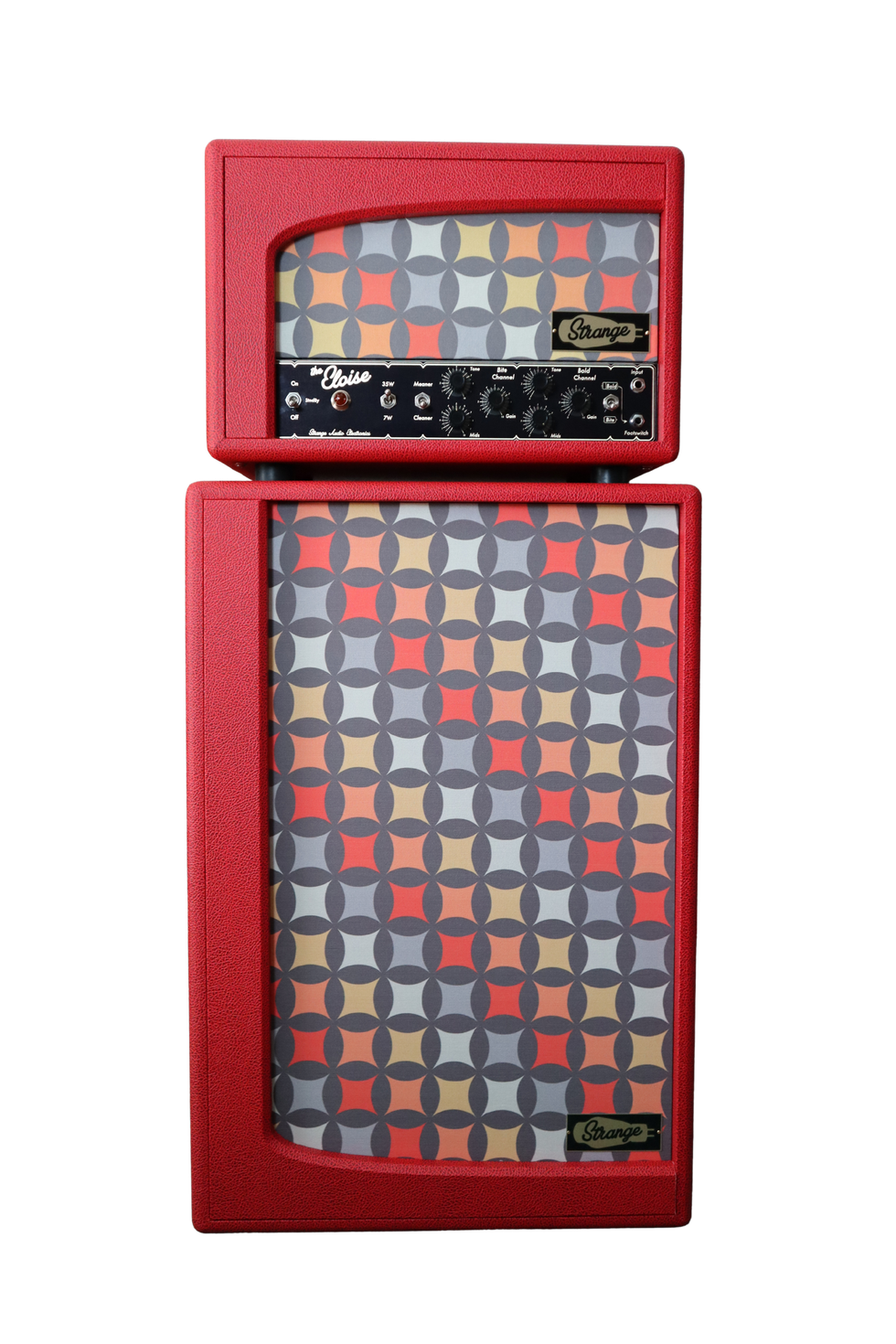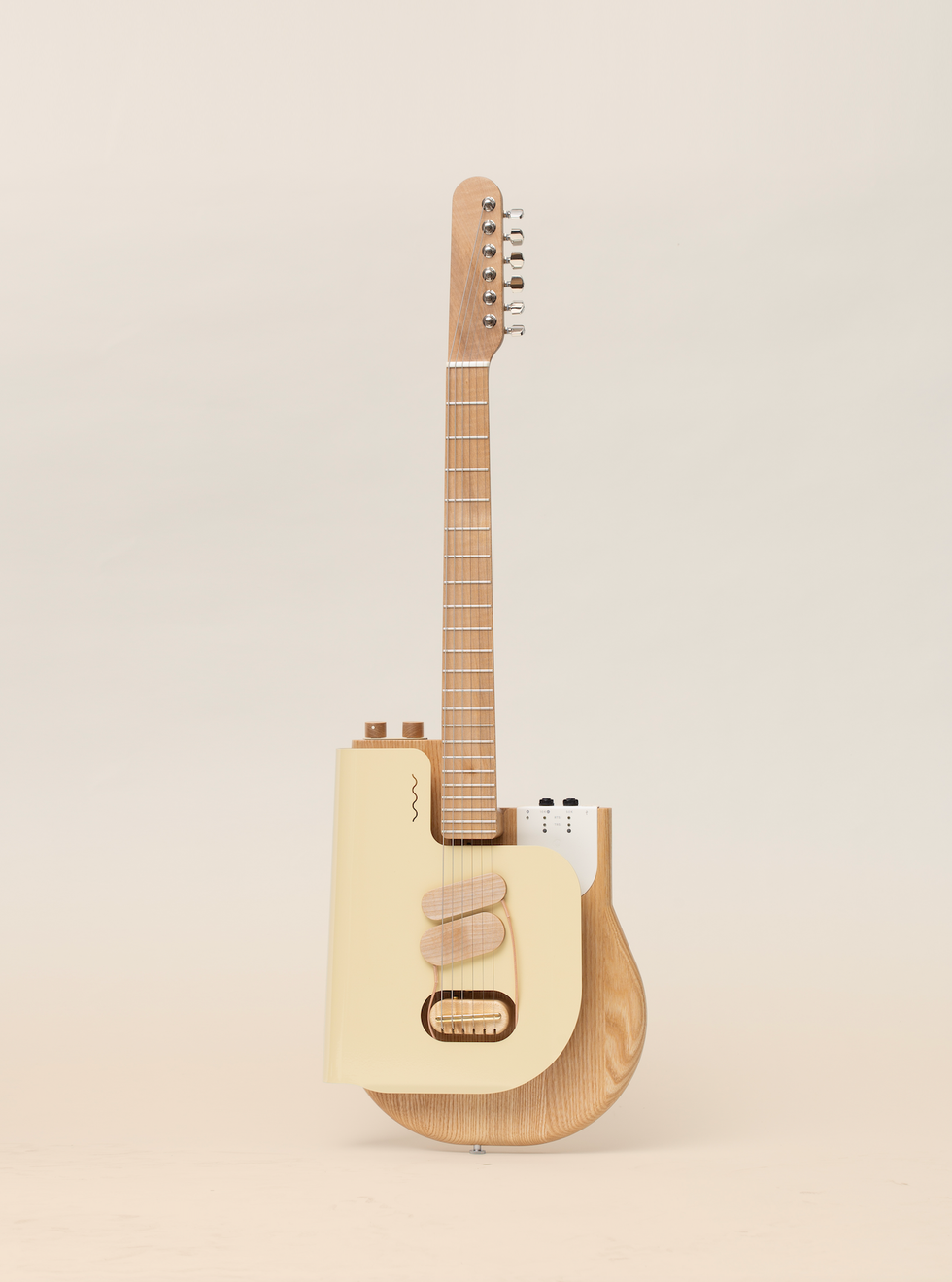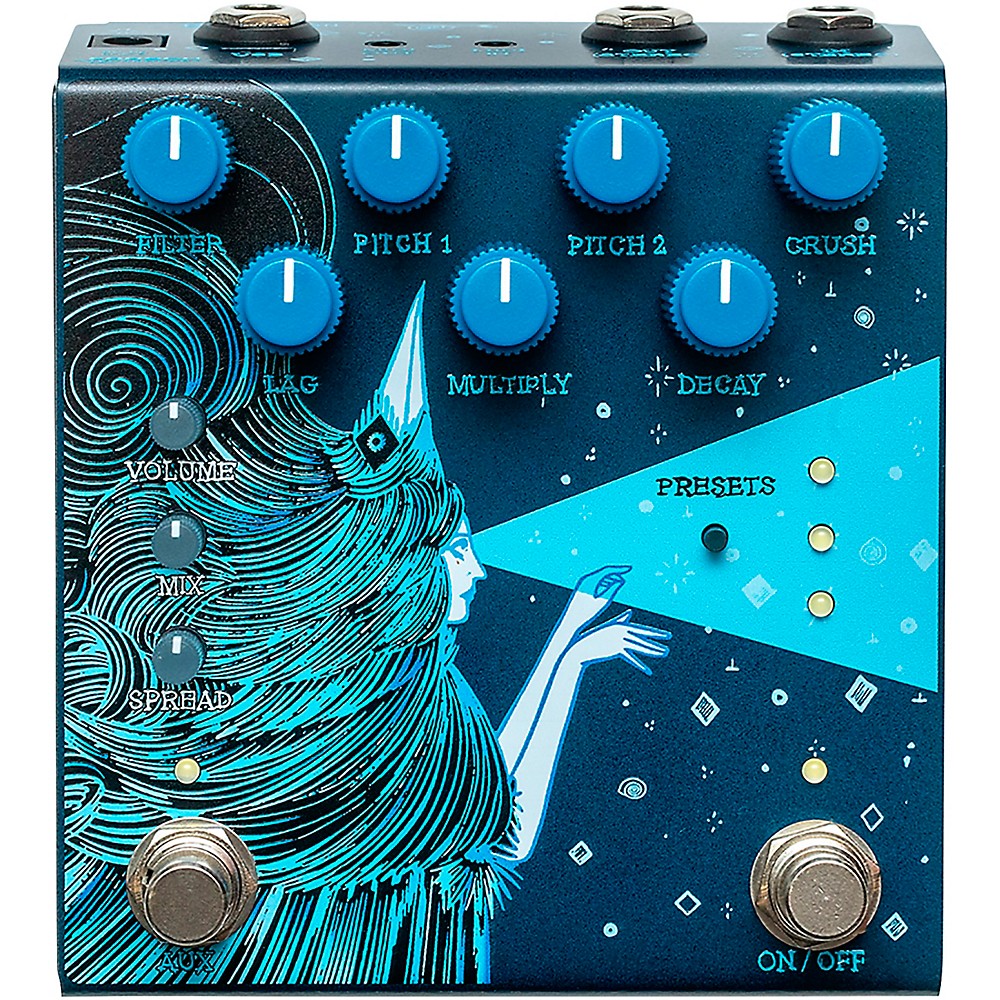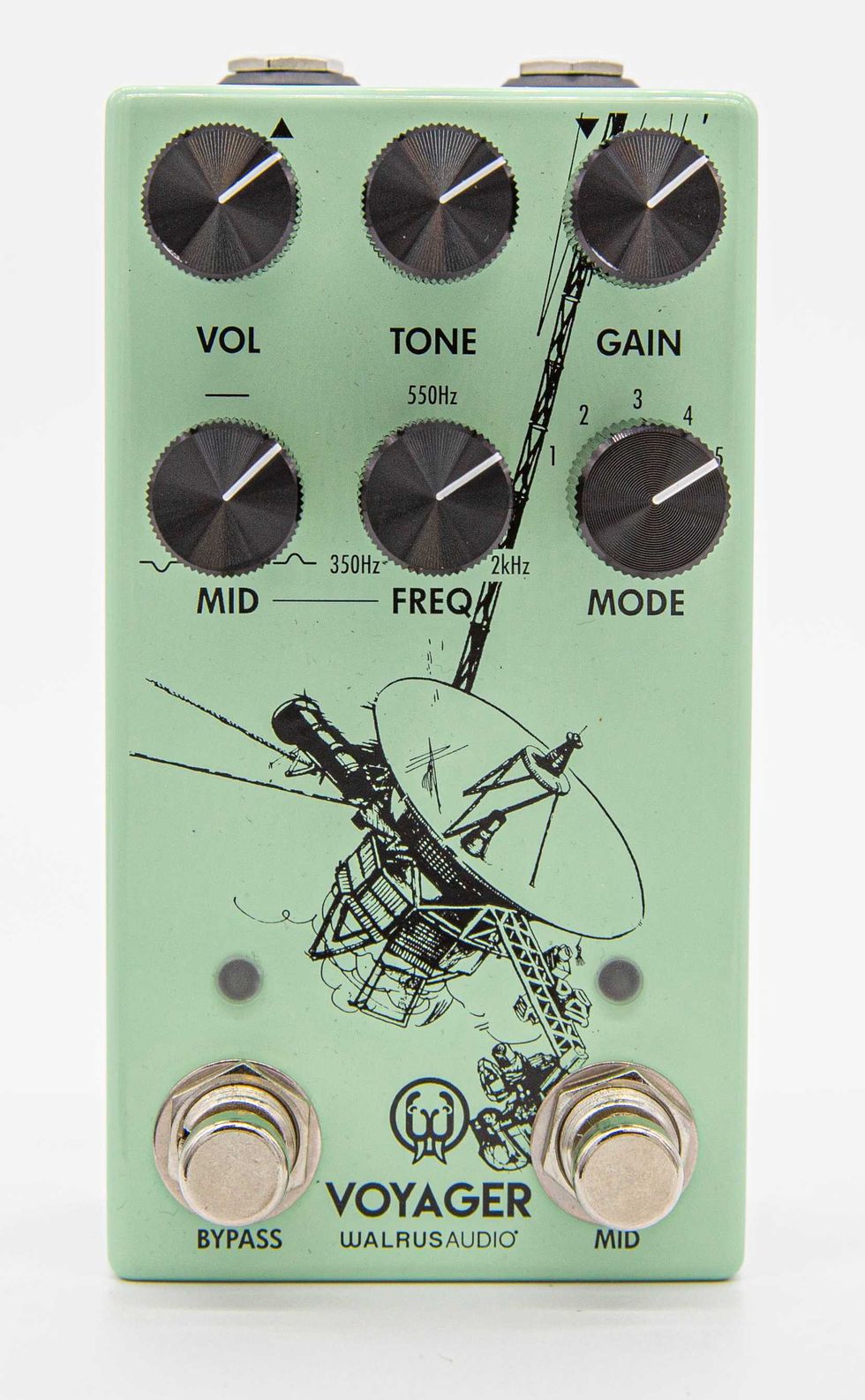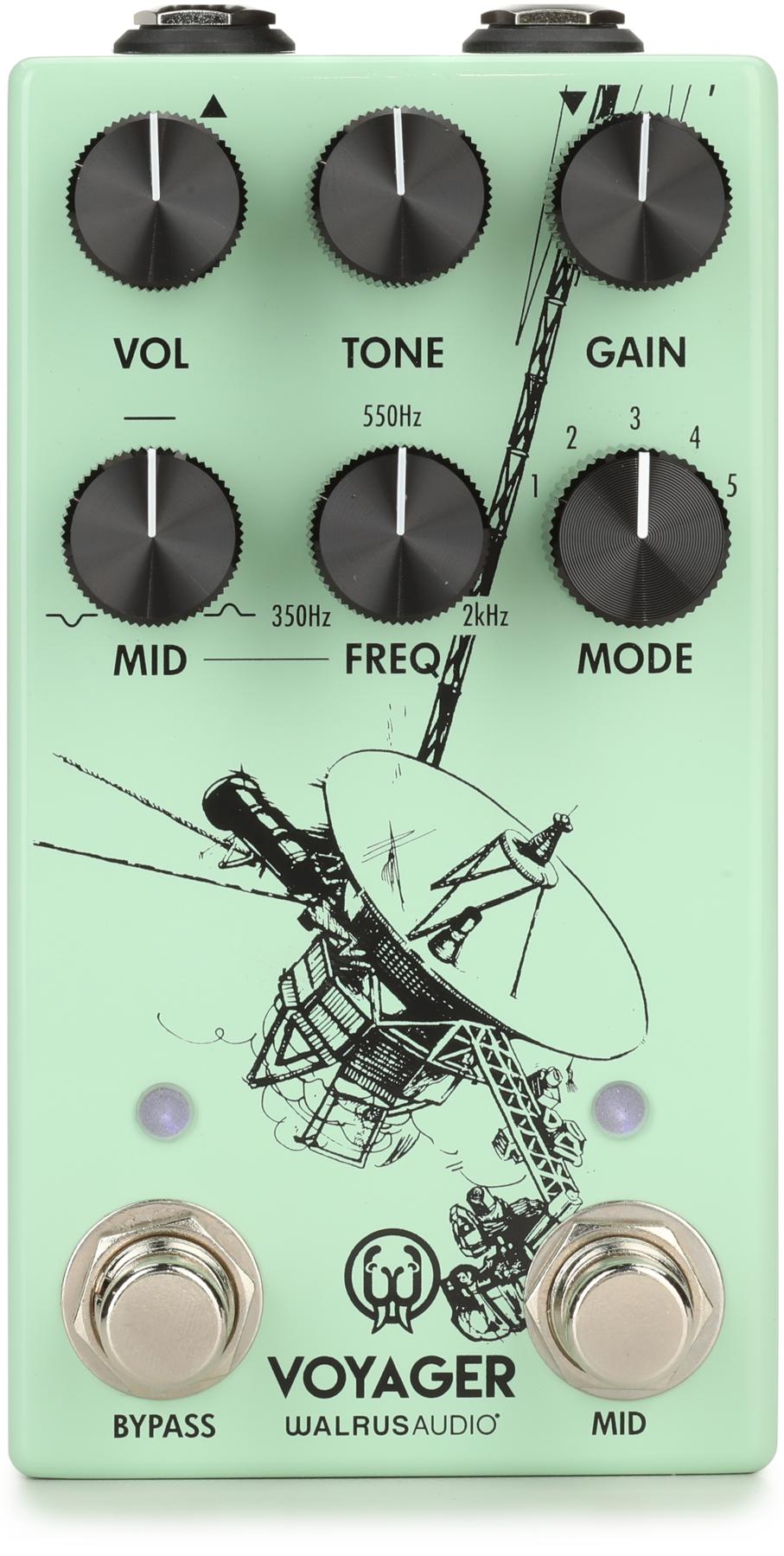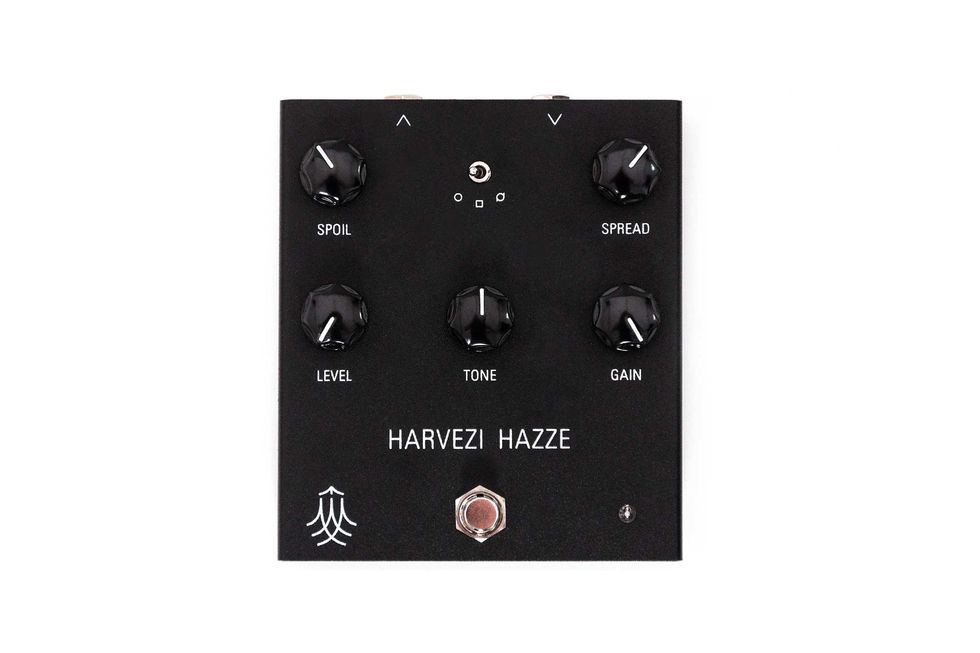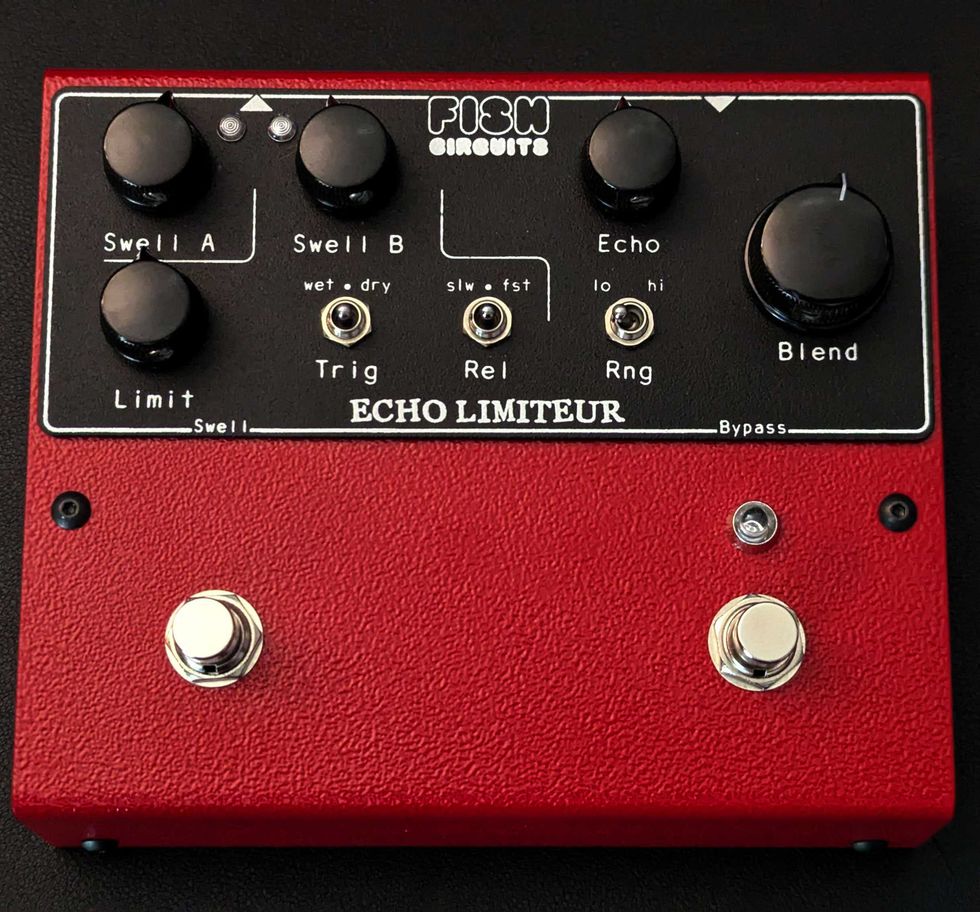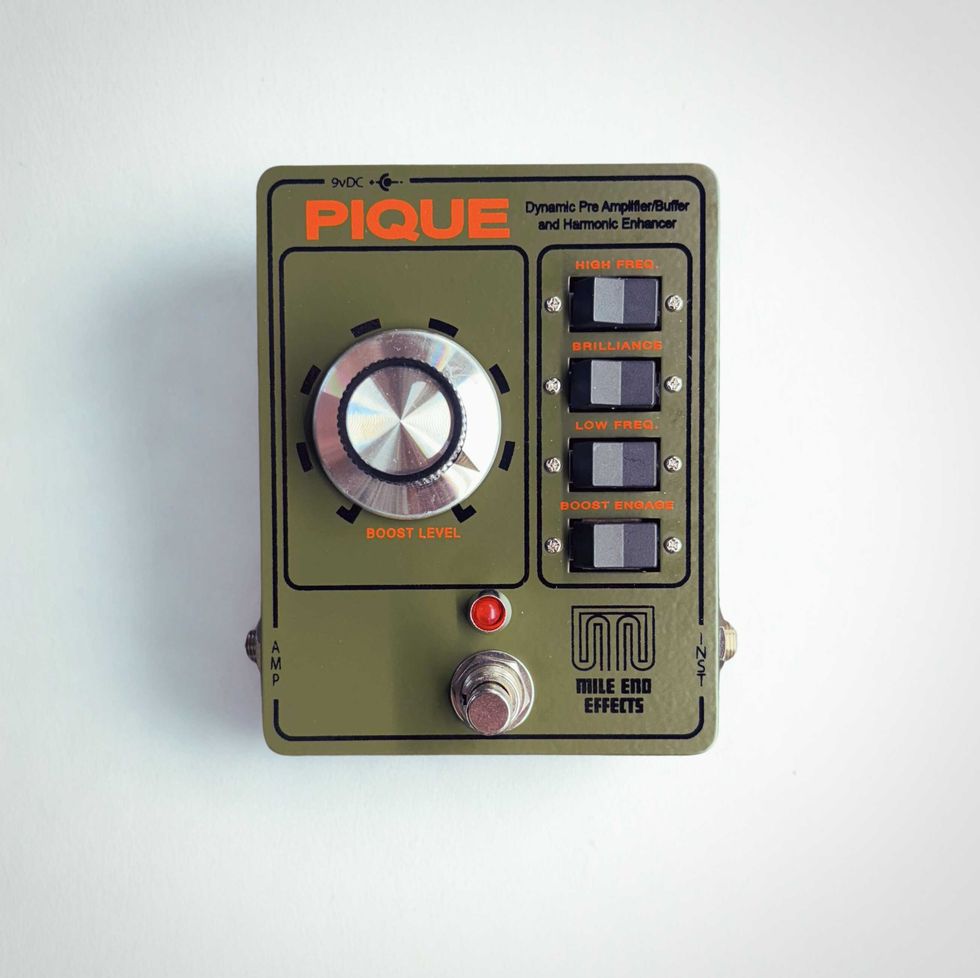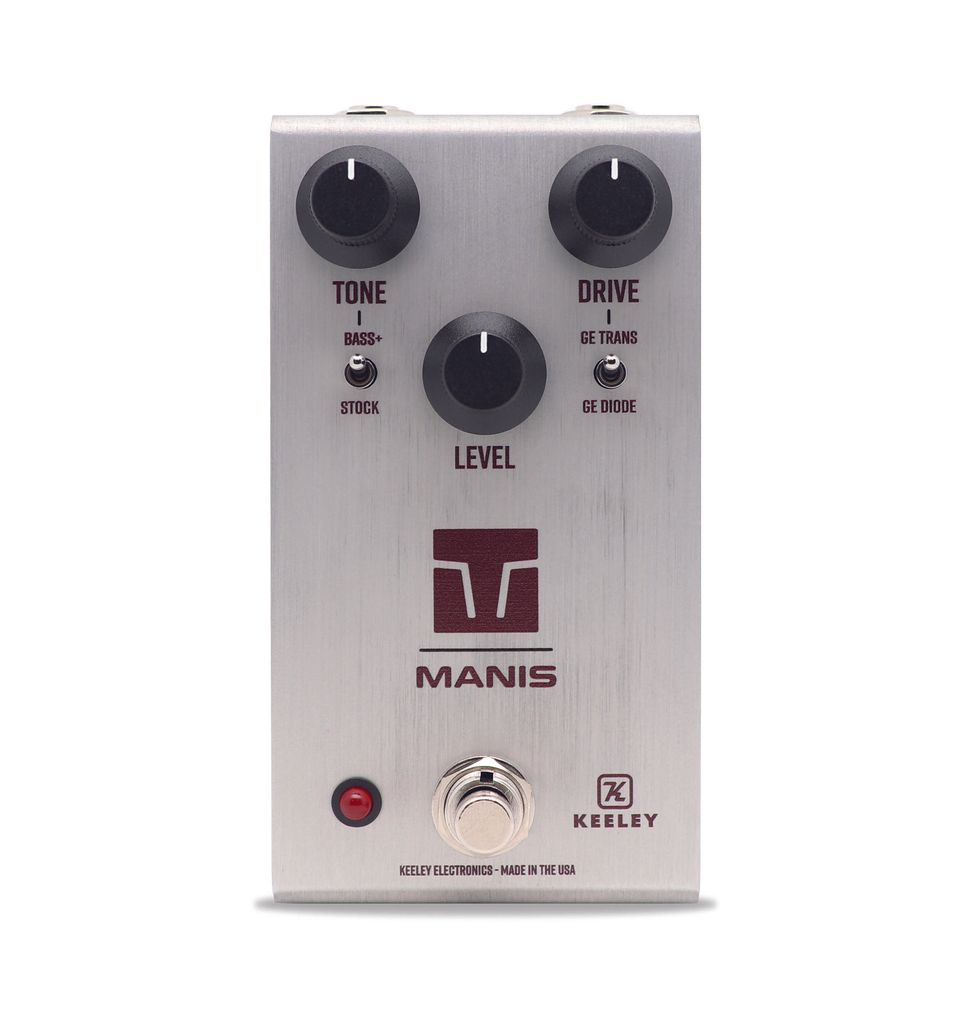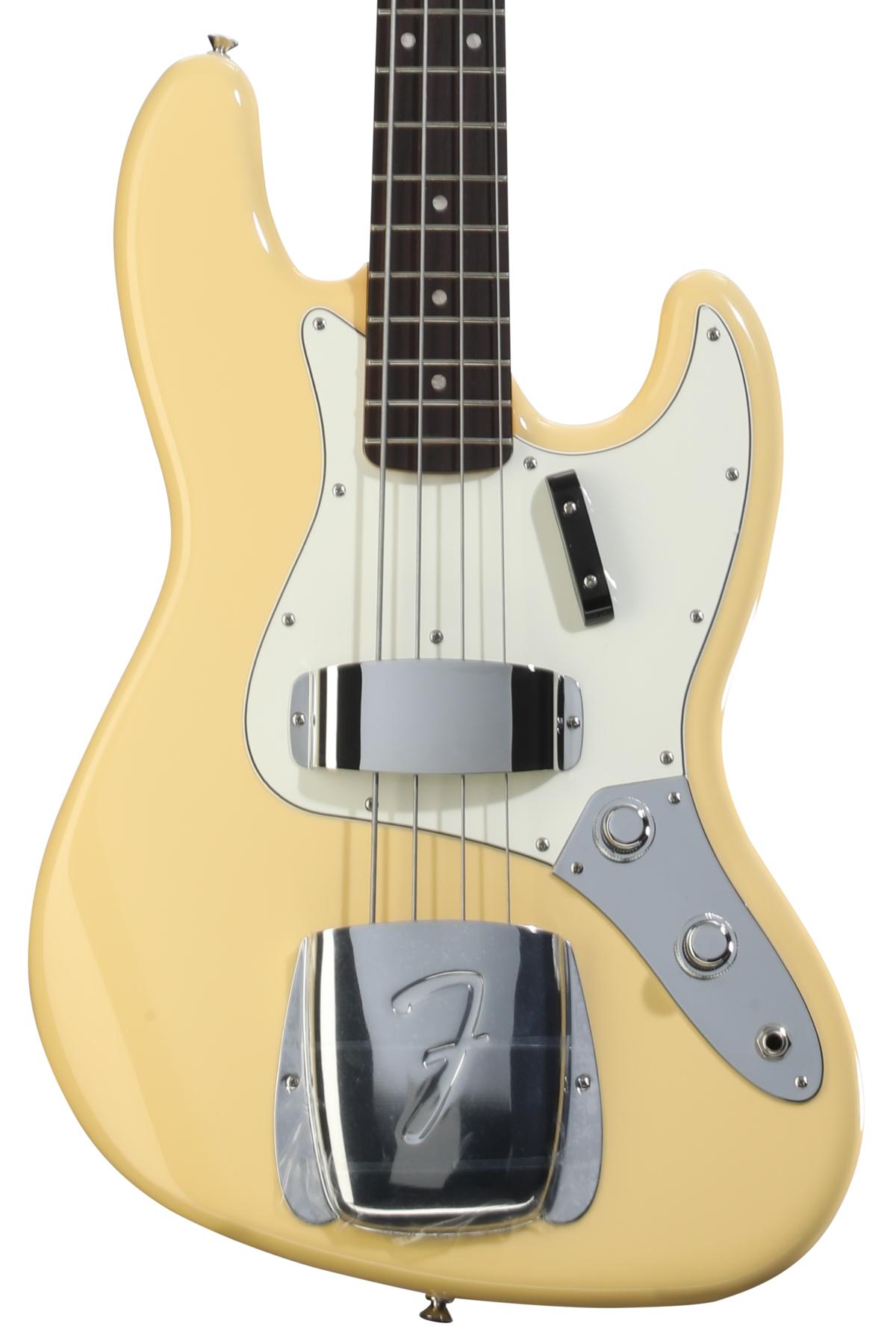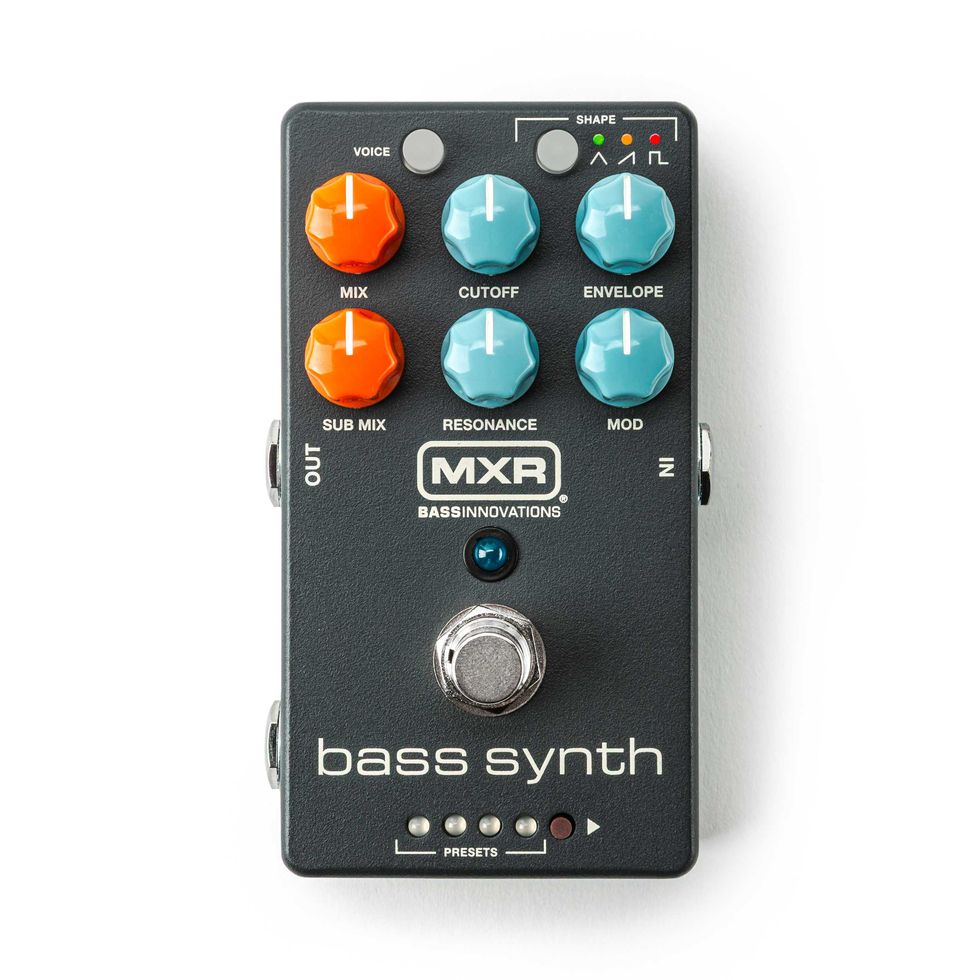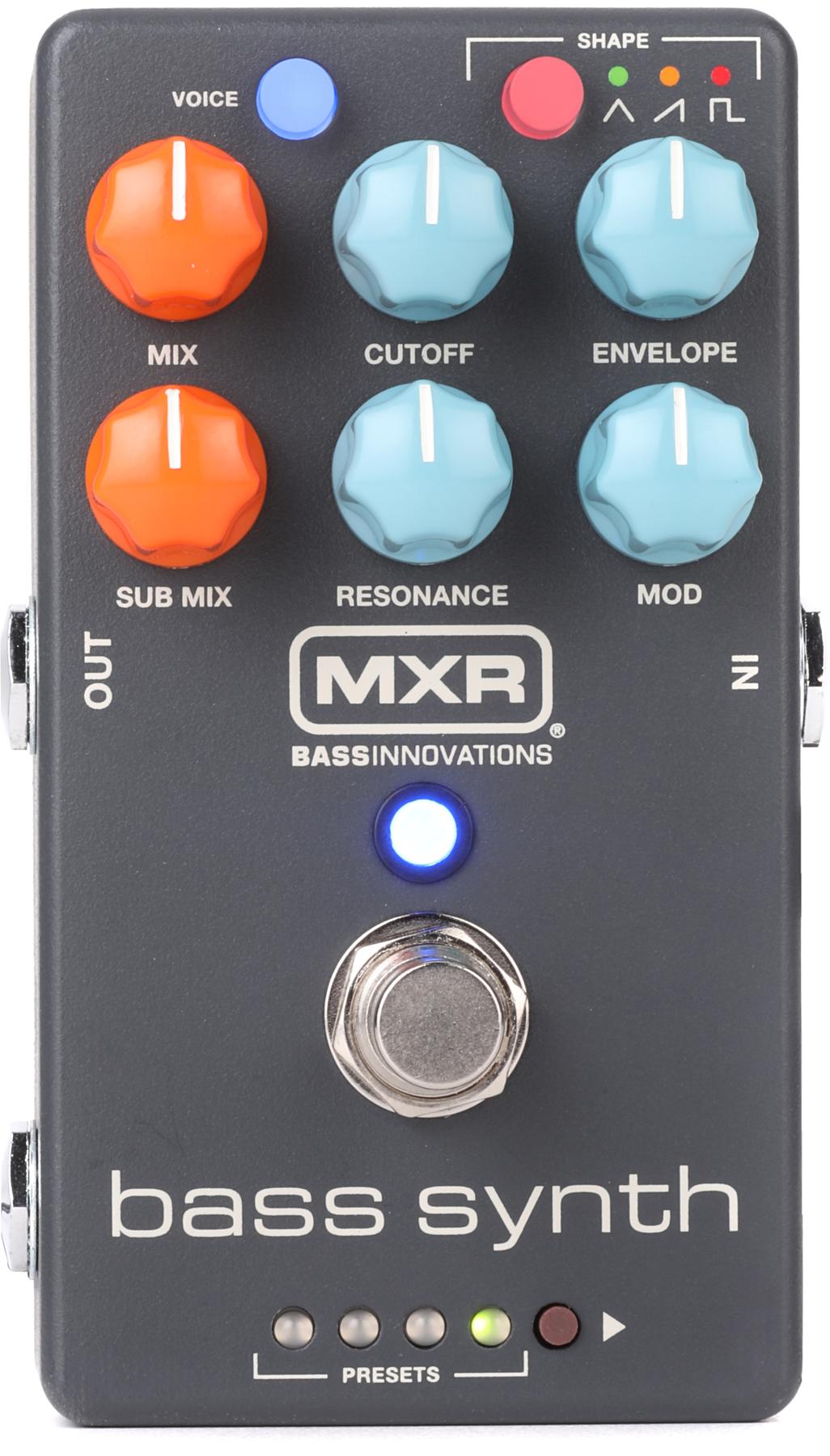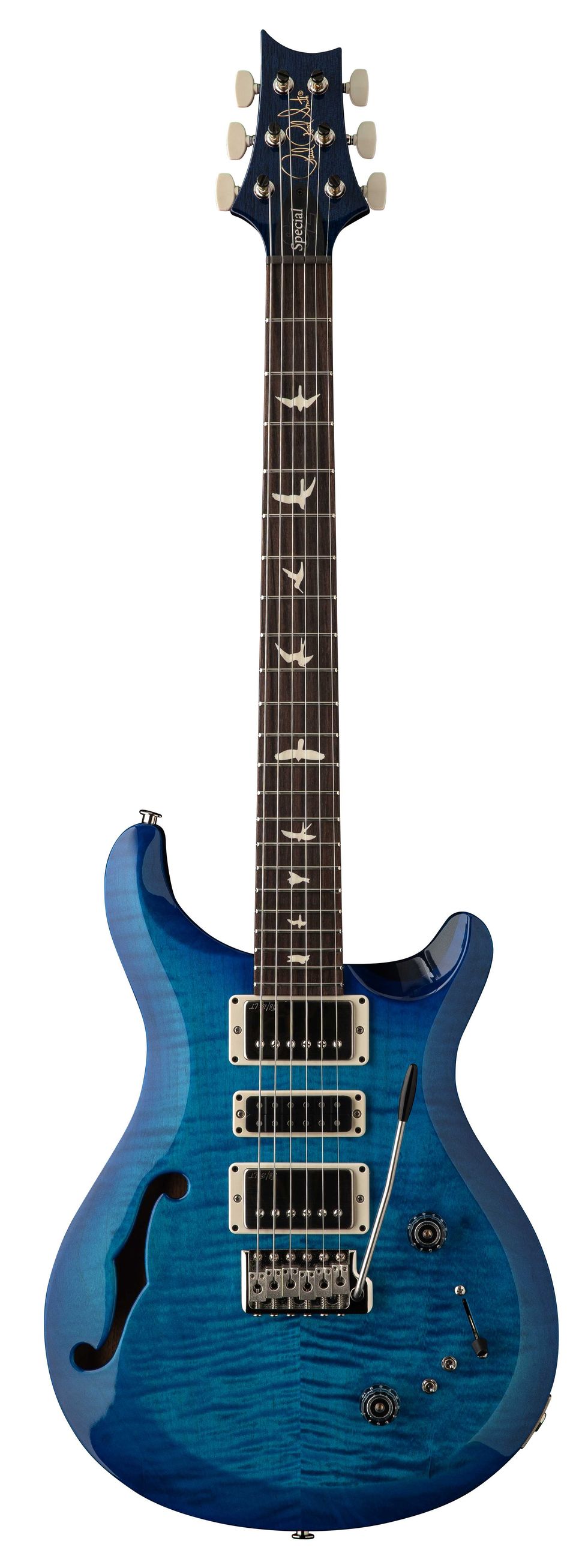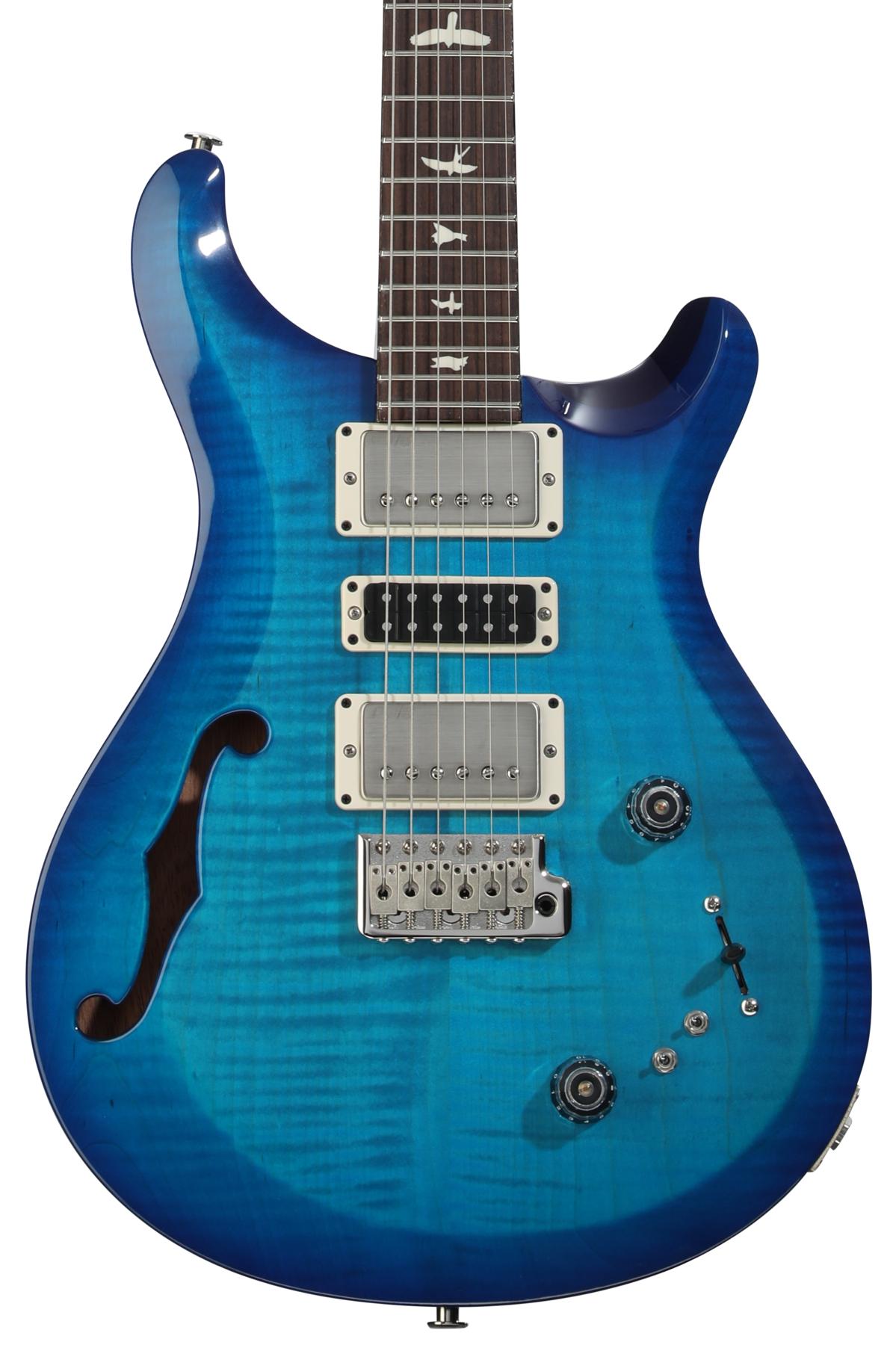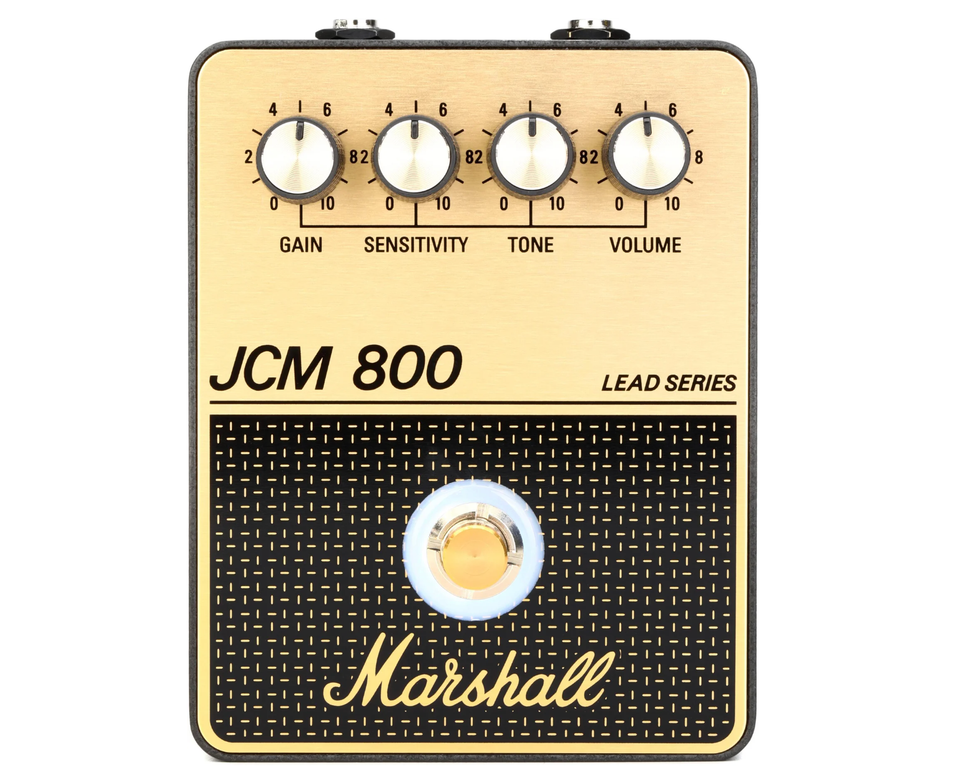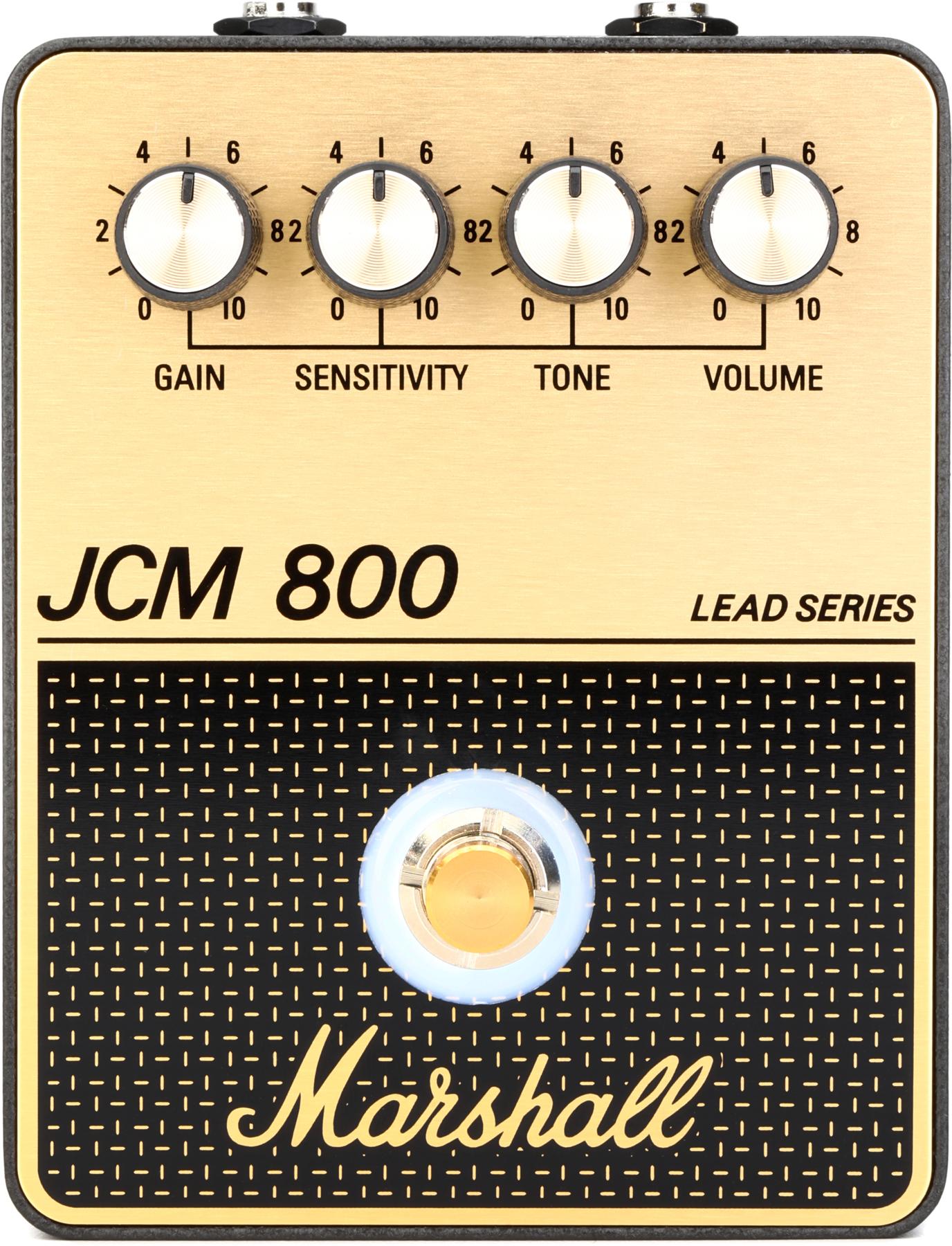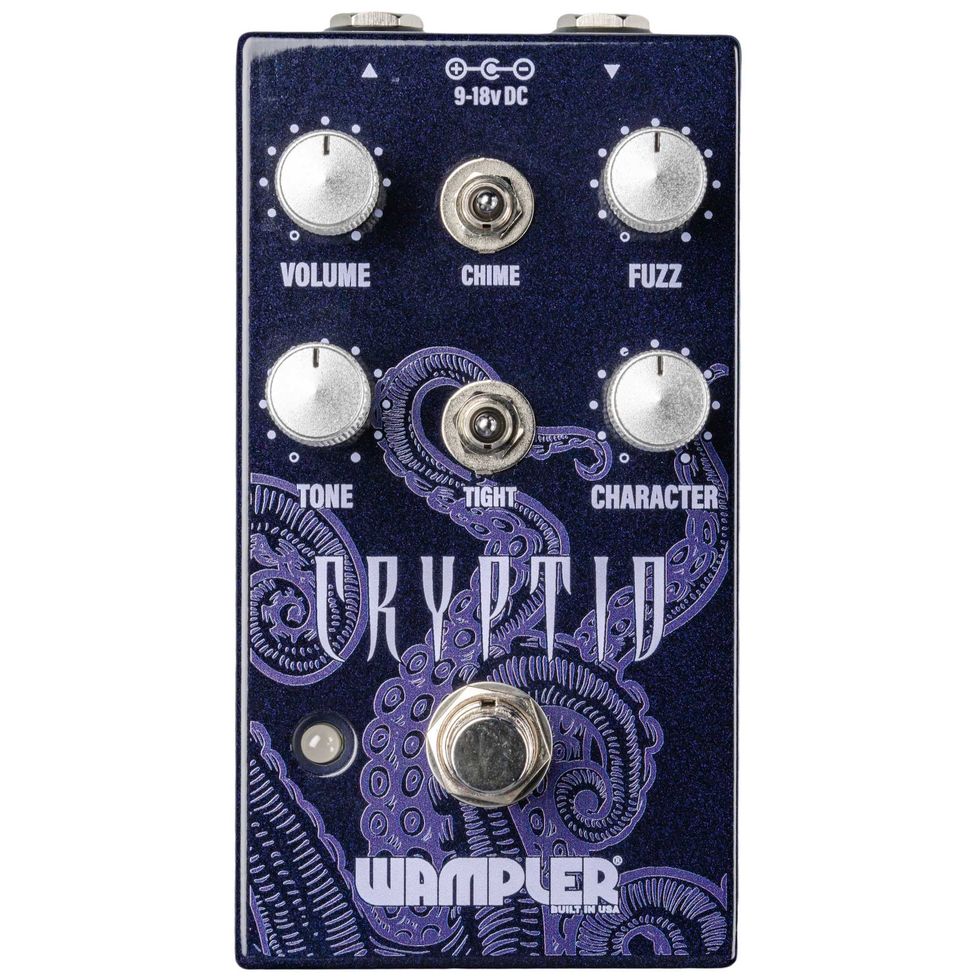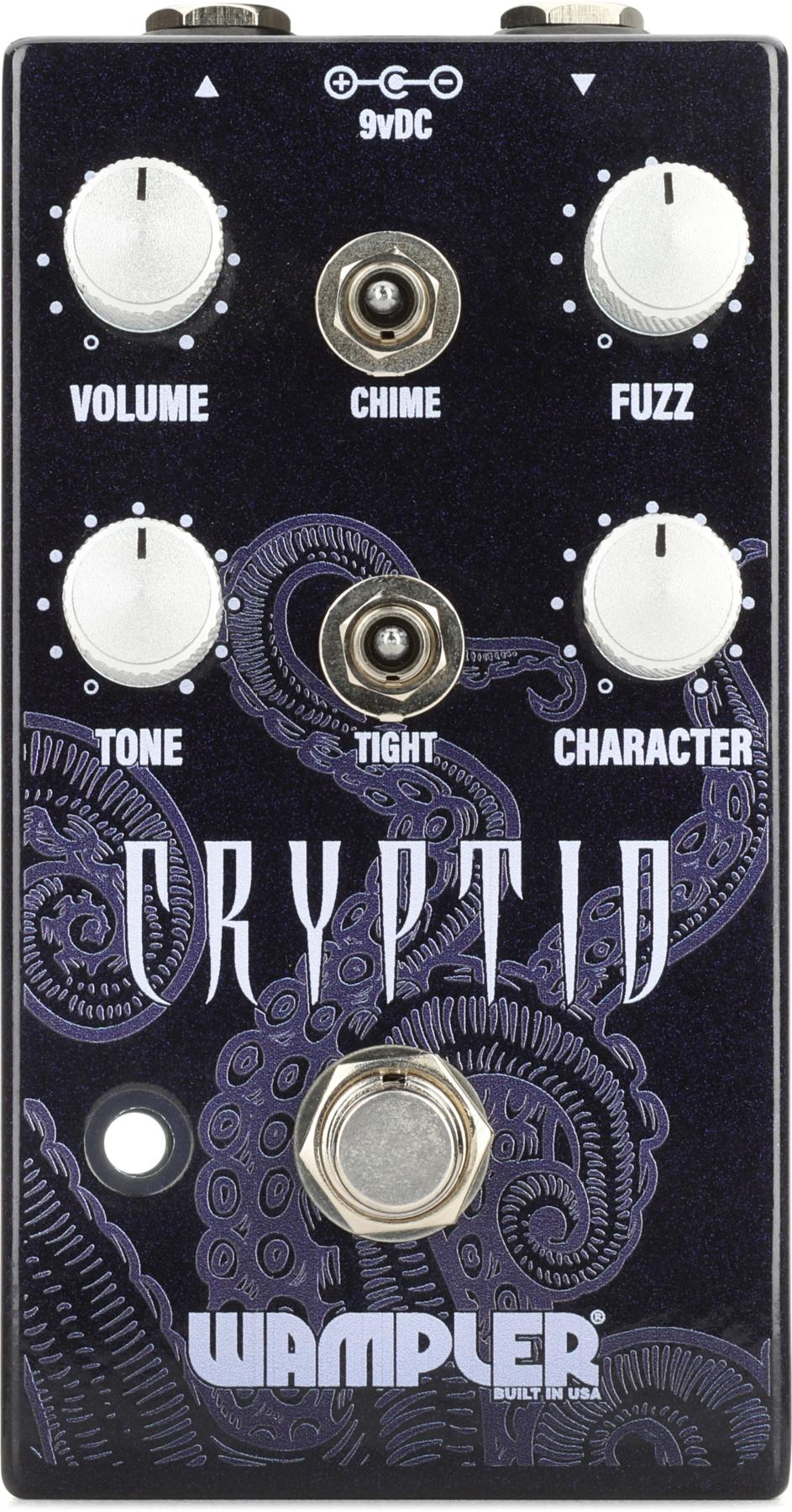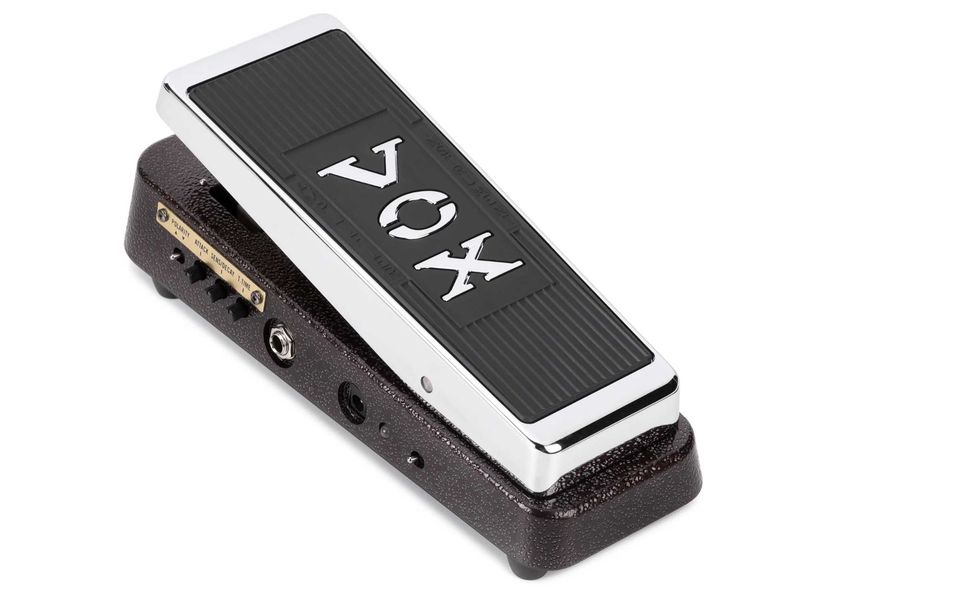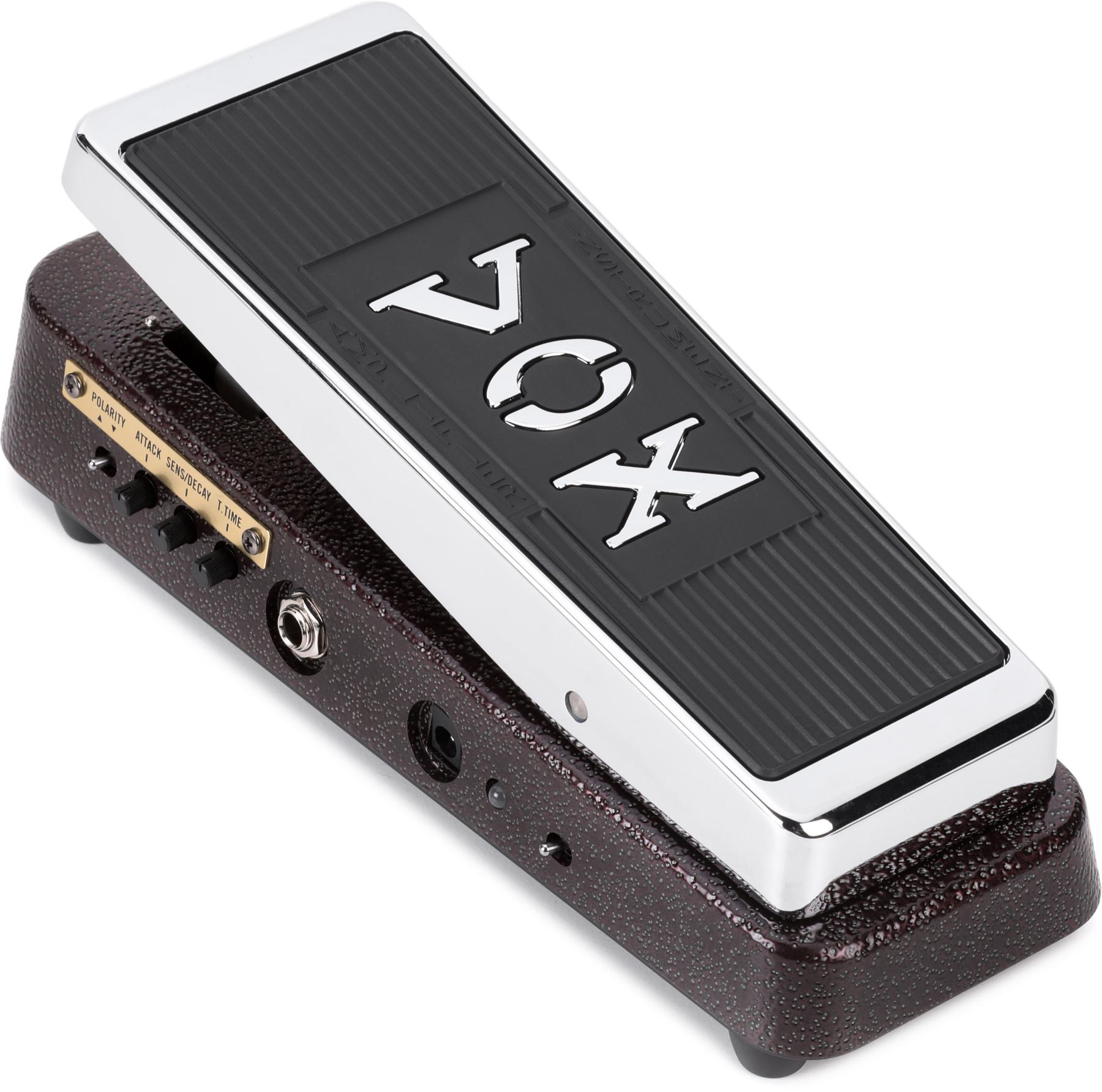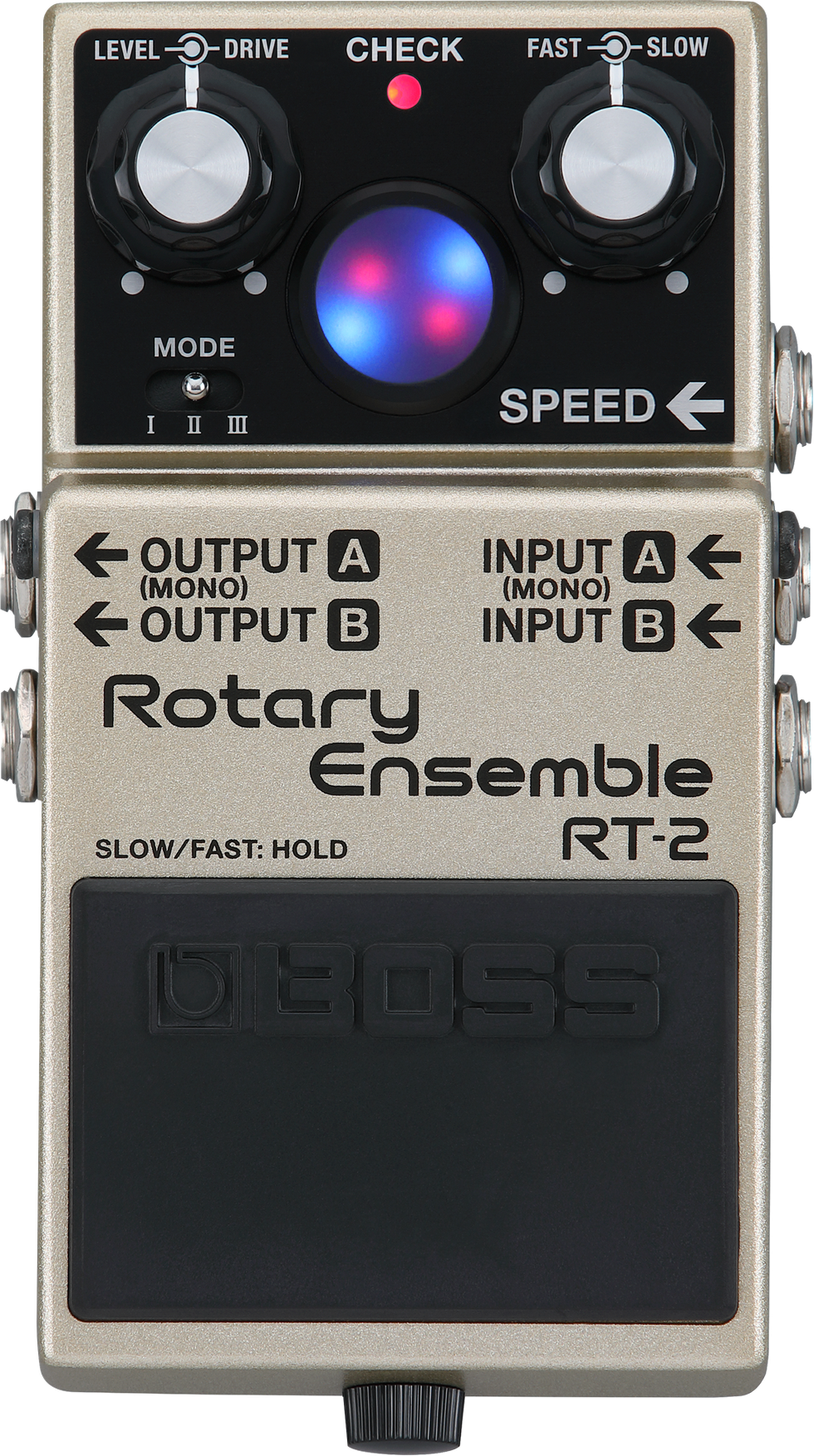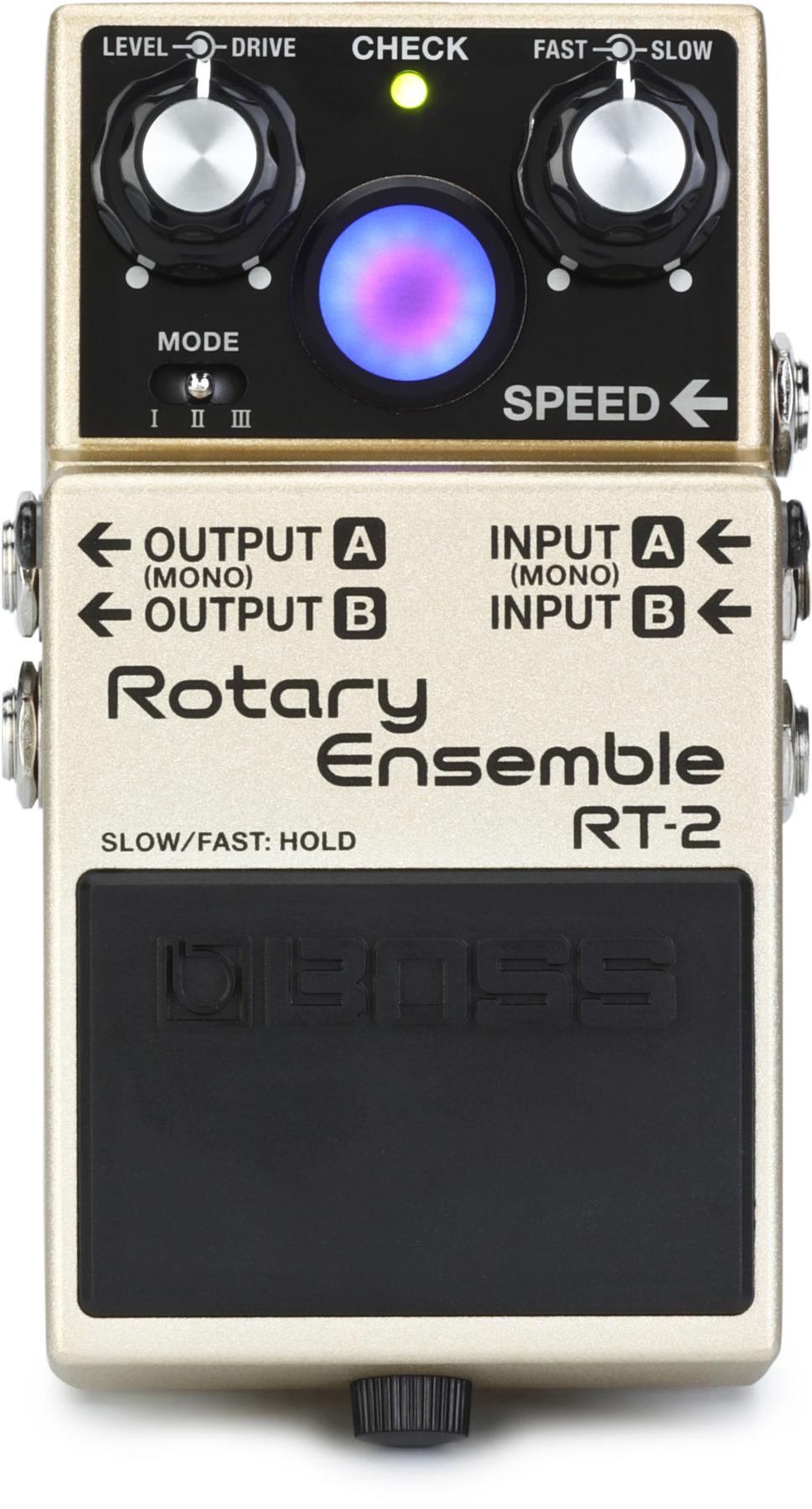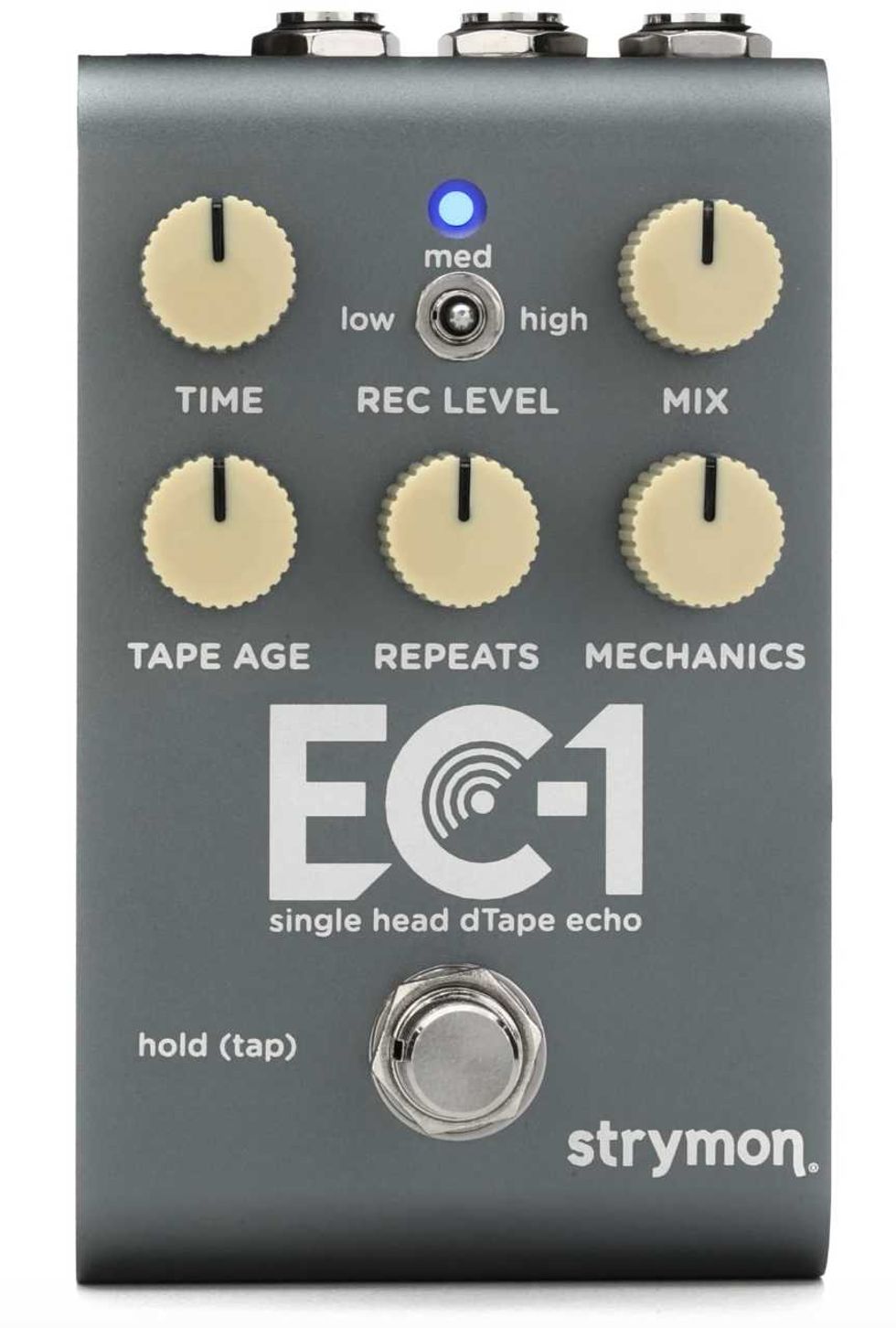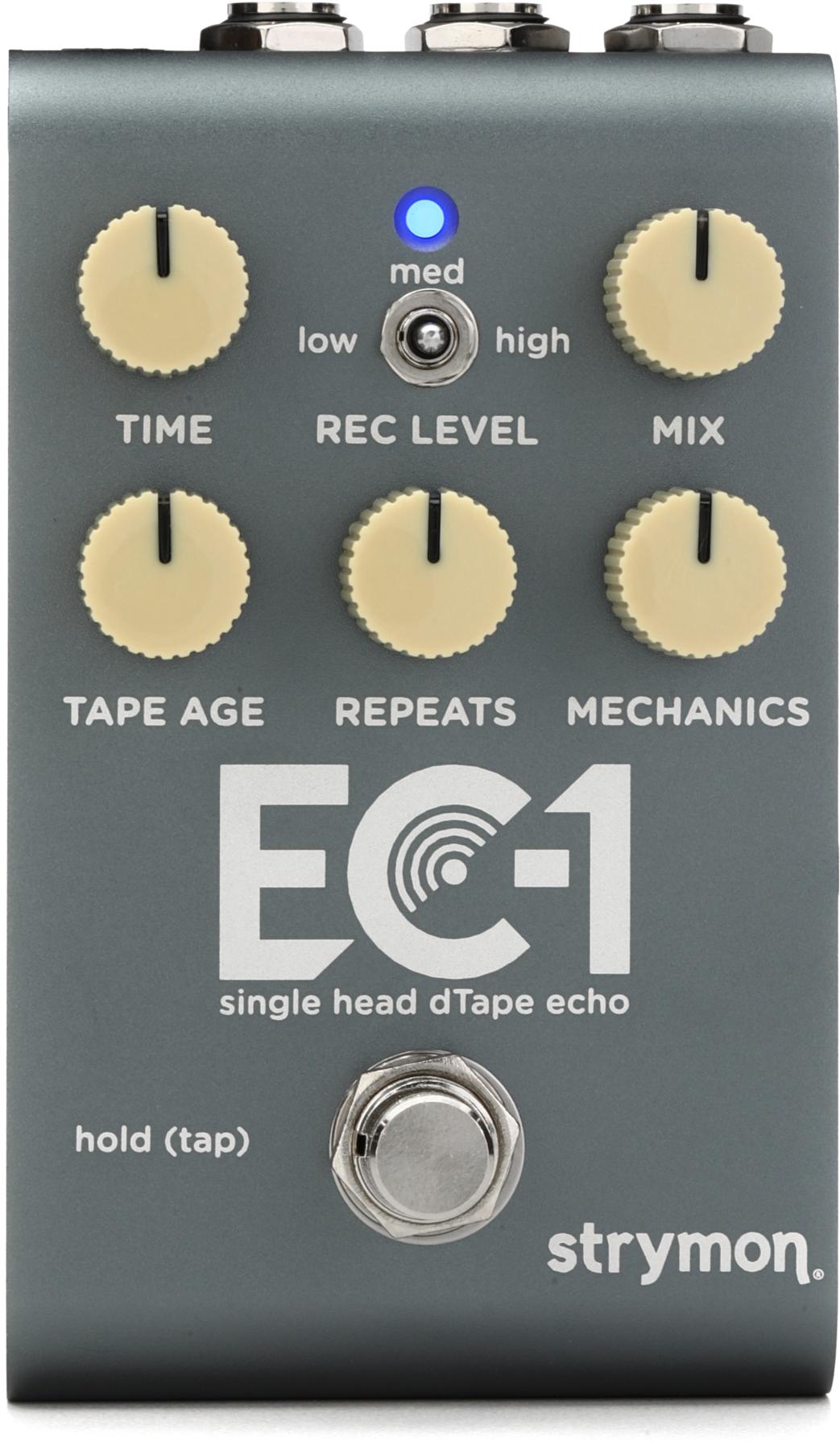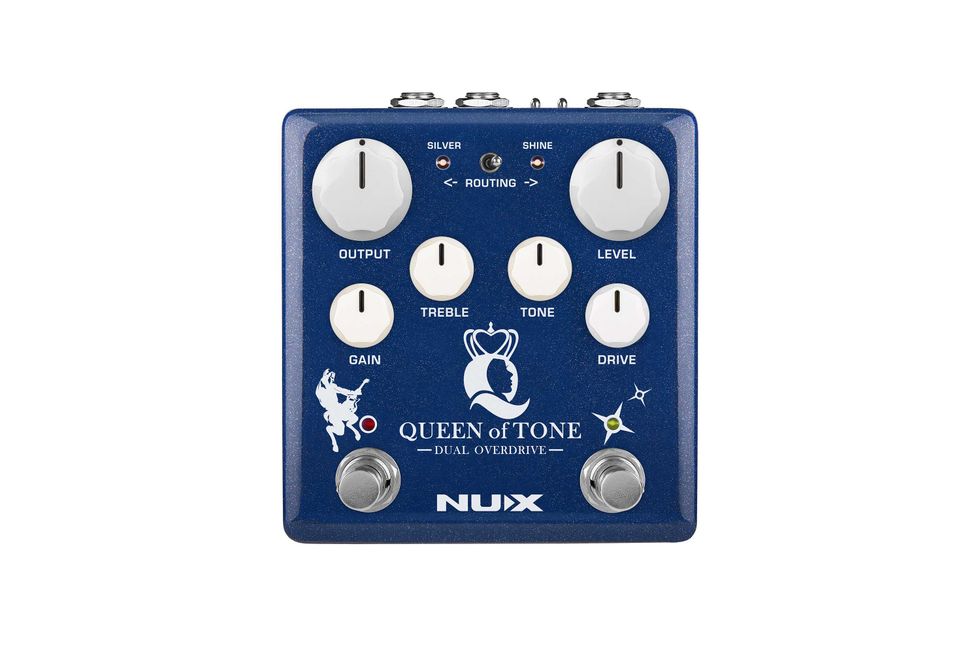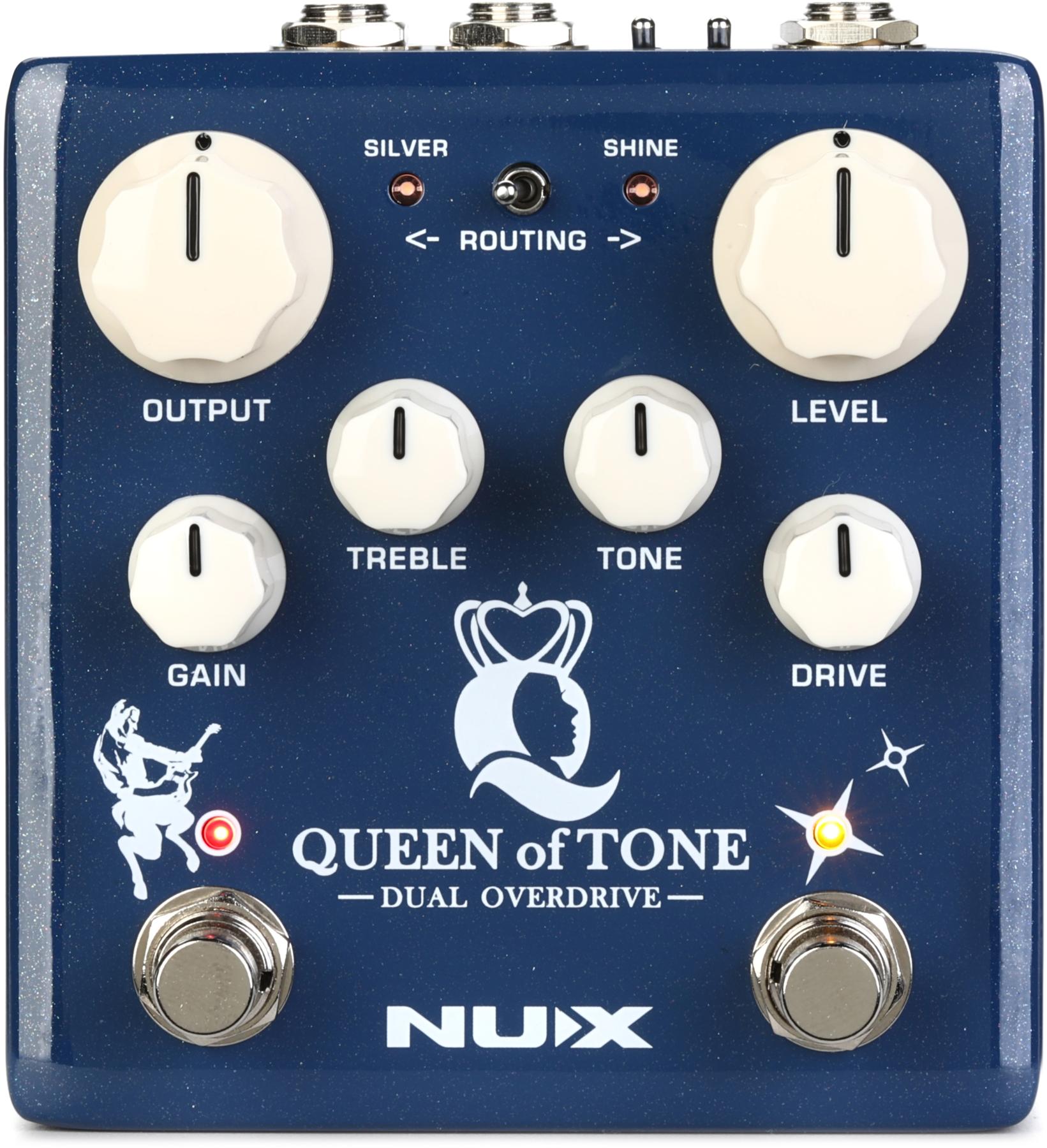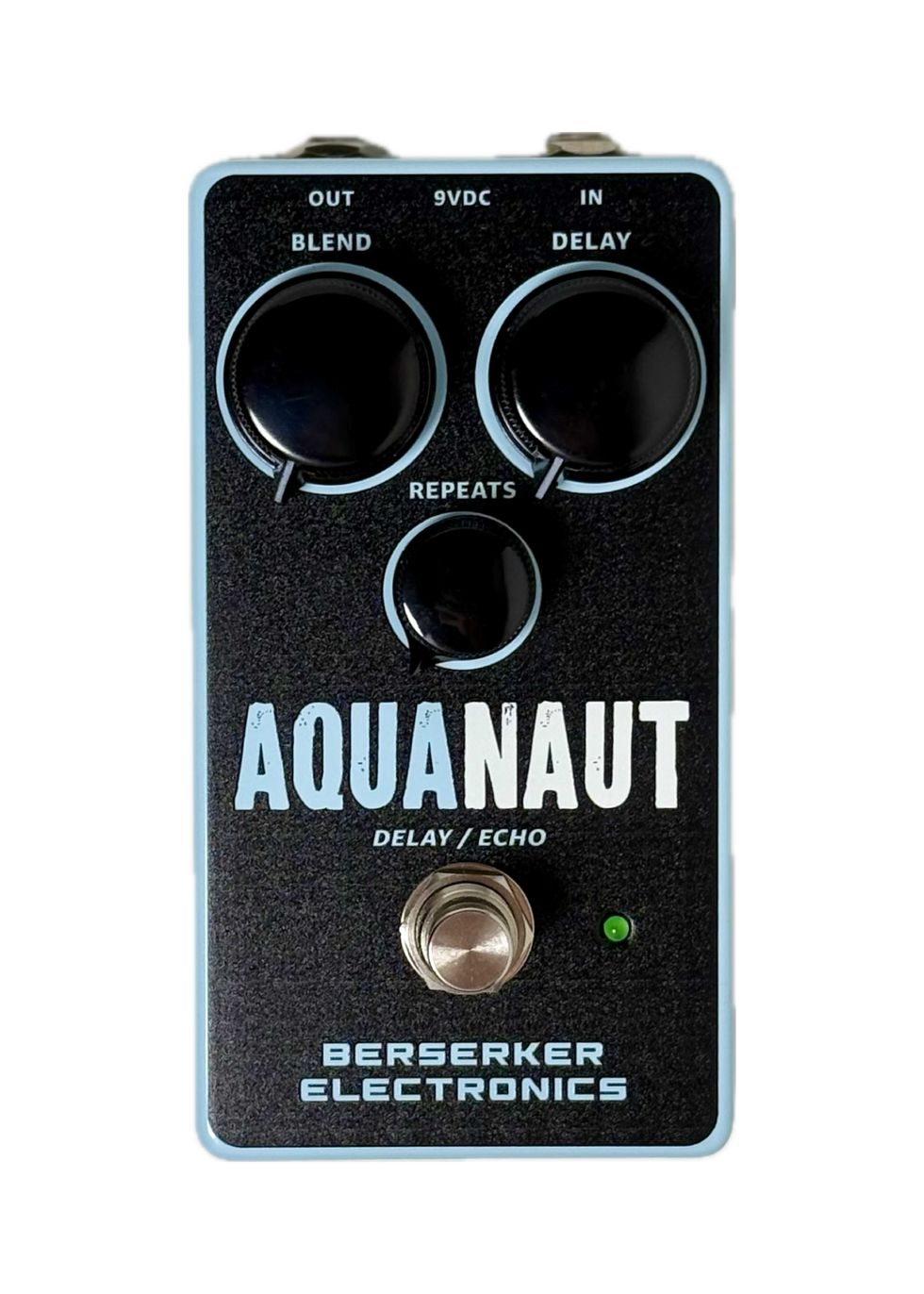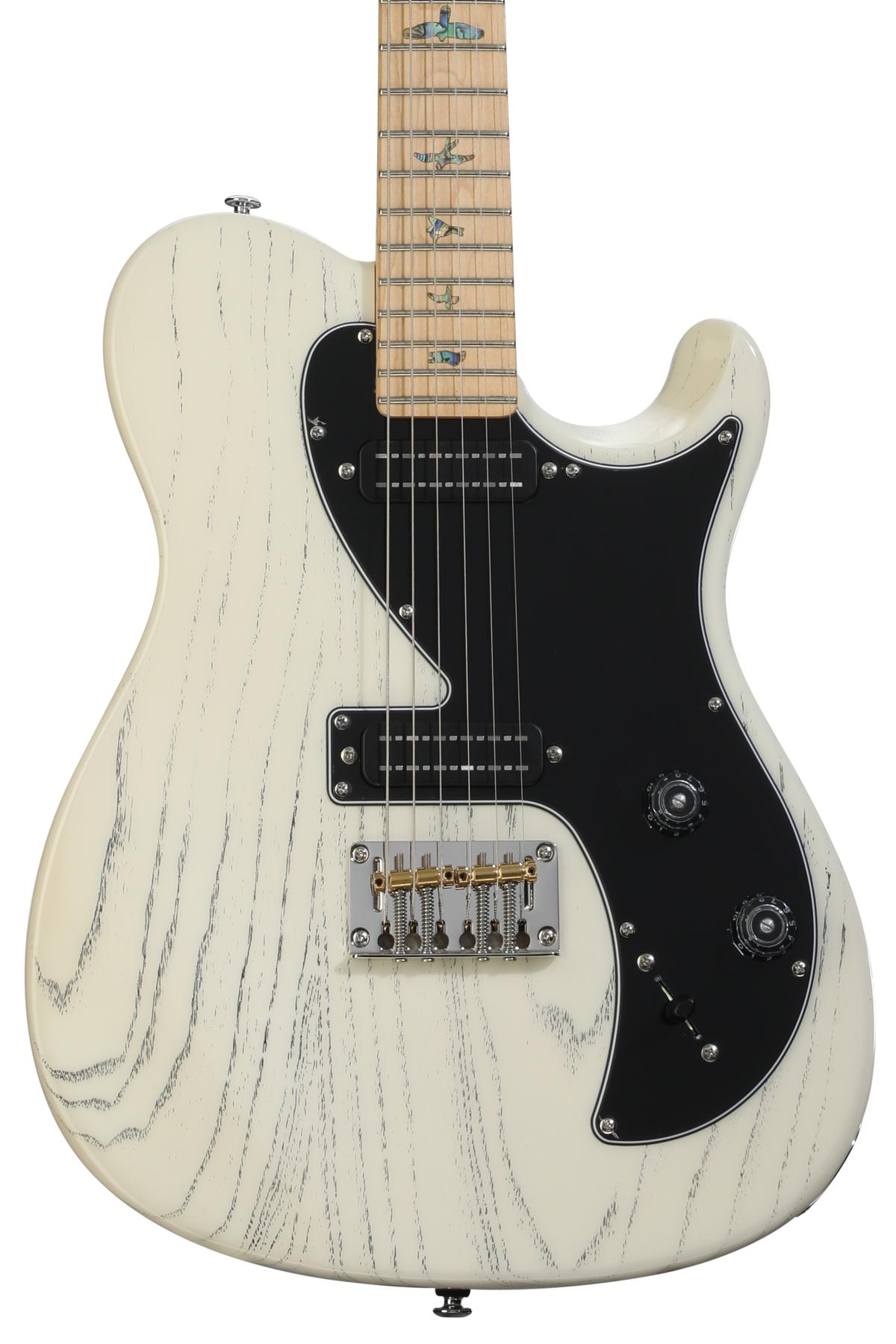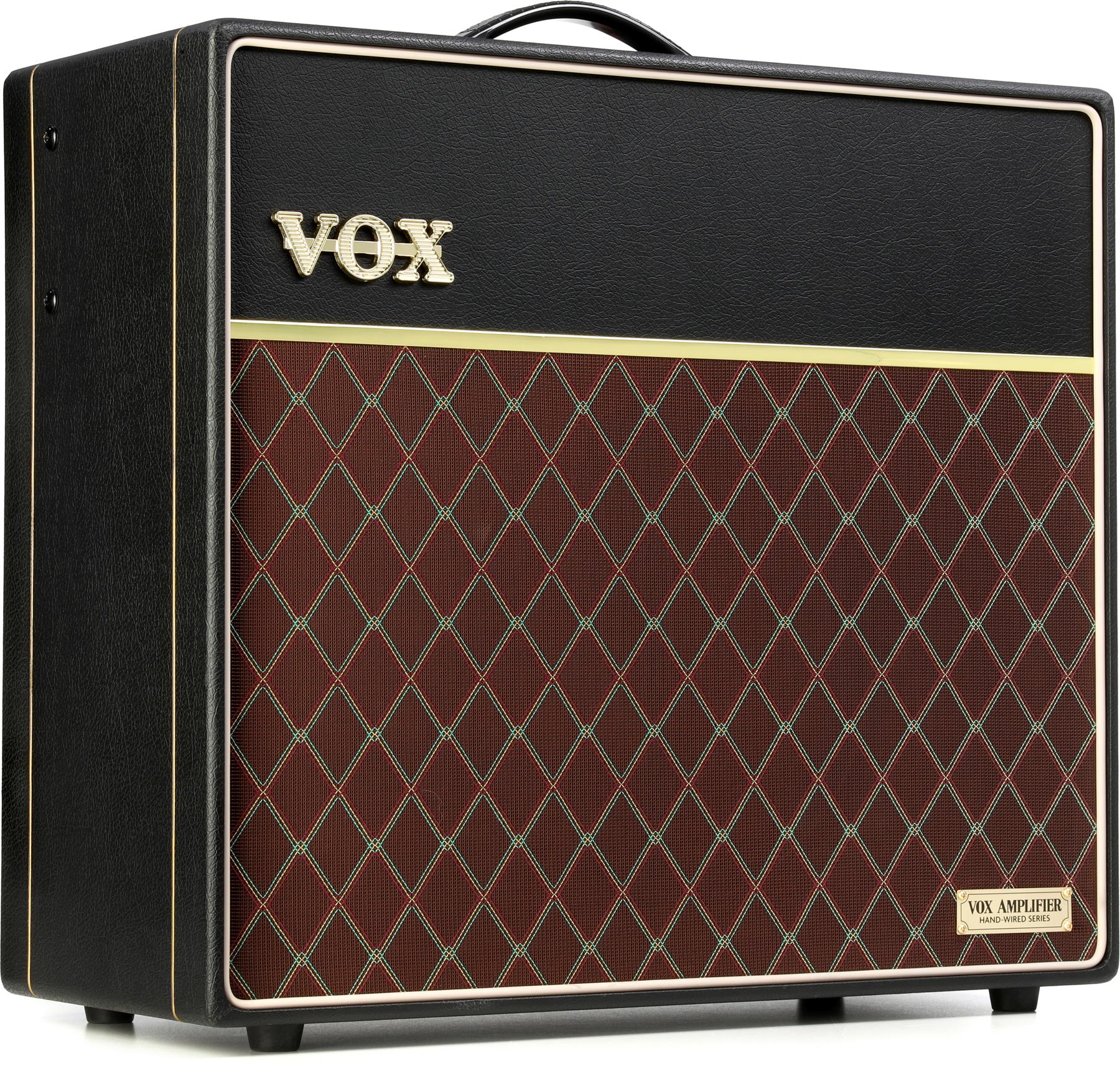In the 50 years since their big, chrome covers first reflected a hot stage light, Fender’s Seth Lover-designed Wide Range humbuckers have gone from maligned to revered. The guitars built around Wide Range pickups are legends in their own right, too. Keith Richards’ Telecaster Custom is synonymous with the Stones dynamic and adventurous late-70s-to-early-80s period. Scores of punk and indie guitarists made the Telecaster Deluxe a fixture of those scenes. And Jonny Greenwood almost singlehandedly elevated the Starcaster from a curiosity to an object of collector lust. The fourth member of the Wide Range-based guitar family, the ’72 Telecaster Thinline, lived a comparatively low-profile life. Yet it is a practical, streamlined, uniquely stylish, and multifaceted instrument with a truly original voice—qualities that are plain to see, feel, and hear in this new American Vintage II incarnation.
Though the ’72 Thinline re-issue has been a fixture in Fender and Squier lines for years, the pickups in those guitars were mere visual approximations of the Wide Range pickups that made the originals so distinct. But thanks to the introduction of Fender’s new CuNiFe magnet-based Wide Range pickups, the new American Vintage II ’72 Telecaster Thinline now exists in the most vintage-correct guise since the original—right down to the Lover-style Wide Range units, 1 meg potentiometers, and a 7.25" fretboard radius. It’s a lively, exciting, and rich-sounding instrument that spans Fender and Gibson textures while inhabiting a tone world all its own.
Fender '72 American Vintage II Telecaster Thinline Demo | First Look
Of Mashups, Magnets, and Bobbins
Avoiding patent infringement is a powerful driver of invention. When Seth Lover came to Fender from Gibson in the late ’60s, he inherited a directive to create a Gibson-beating humbucker. To do that, he’d need to avoid copying the PAF he’d designed for Gibson. But Lover also had a specific, self-imposed objective: to build a meatier-sounding pickup that retained the fast transient response of Fender single-coils. Lover’s task was like threading a needle. And for a long time, the popular consensus was that the Wide Range experiment failed. But in the intervening years, open minds and ears have proven how versatile, beautiful, and powerful sounding the Wide Range can be. They are also a case study in how a series of small design pivots can yield an unexpected whole.
Structurally speaking, the differences between a Wide Range and a Gibson PAF humbucker are simple but important. In a PAF, steel pole pieces focus a charge from an alnico bar magnet at the pickup’s base. A Wide Range, however, uses adjustable pole pieces as magnets—a design enabled by the use of CuNiFe, a malleable, magnetic alloy of copper, nickel, and iron that can be fashioned into magnetic screws. When Lover designed the Wide Range, CuNiFe was used extensively to manufacture tachometers, speedometers, and other gauges. It was relatively cheap and plentiful. But as gauges increasingly became digital, CuNiFe went increasingly unwanted. Cheap supplies dwindled. Before long, the Wide Range pickup was gone, too.
In the decades since, a lot of great pickup builders debated what makes vintage Wide Range pickups special—and the role CuNiFe magnets play. What is certain is that CuNiFe led Seth Lover to a very interesting series of engineering adaptations. Consider this chain of events: The lower iron content in CuNiFe alloy makes it harder to extract low-end warmth in pickup applications. That necessitates bigger bobbins and more wire turns. The resulting wider spacing between bobbins also means a wider pickup, which, in turn, reads vibrations along a longer expanse of string. Needless to say, there’s much that could account for a Wide Range’s unique voice.
Fender engineer Tim Shaw, who developed the new Wide Range pickups and who dives deep into the minutiae of such matters, asserts that CuNiFe is an indispensable ingredient in a Wide Range’s sonic signature, and a material with very audible and discernible individual properties. “As a designer, we almost never get to work with a completely different magnet family,” Shaw says. “It’s like having a new scale or set of chords to play with. Even when CuNiFe is overdriven, it (retains) definition and a very pleasant and musical top end. That’s been very inspiring to me.”
Though Shaw’s take on the Wide Range essentially sticks to the original formula, he voiced them to accommodate the extreme ranges of what he heard in various vintage specimens. His team made another important decision related to authenticity that pays sonic dividends here by using the 1 meg potentiometers that Fender used in the early ’70s. While folks like Shaw care less for the taper in 1 meg pots (it’s discernibly less smooth), they are perceptibly brighter than 500k pots when the guitar tone and volume are wide open. Some players like the more PAF-like output you get from the 500k pots. Others find that 1 meg pots are key to making Wide Ranges sound distinct and extra alive. After a few days with the American Vintage II version of the ’72 Thinline Telecaster, I’m inclined to align with the latter camp.
Alive and Kicking
Playing the American Vintage II Telecaster Thinline straight into a loud, clean Fender amp, it’s easy to hear how inspired Lover’s vision was. The Thinline’s bridge pickup sounds like a single-coil Telecaster that’s bulked up without adding an ounce of fat. The top end is clear, snappy, and toothy. And while low strings have a sense of enhanced mass when compared to a single-coil Telecaster, they still twang like Bakersfield in a bottle. This harmonic profile means that the ’72 Thinline doesn’t hog up the low- and low-mid range in a mix, but can still drive an amp deliciously and create a sense of extra heft and explosive excitement. The neck pickup, too, balances mass and detail with grace. Both pickups make sounds that I’ve looked for in Les Pauls and could never quite find. I suspect Seth Lover would be tickled.
Fear No Deconstruction
Pickups were not the only deviation from design norms that distinguished the ’72 Thinline. The first Telecaster Thinline, which appeared in 1969, was hatched from the mind by Roger Rossmeisl, who famously designed Rickenbacker’s 300 series guitars, among others, before moving to Fender and conceiving the Coronado, Montego, and the company’s mid-’60s acoustic line. To create the lighter, semi-hollow Thinline, Rossmeisl adopted the construction technique he developed for Rickenbacker: routing acoustic chambers from a solid section of ash, and then capping the back of the guitar with a thinner section of wood. On the new American Vintage II version, the ash body is fashioned from two solid sections of ash glued together at the guitar’s center line. Because boring beetles have endangered ash trees, visually perfect specimens of the wood are in short supply these days. As a consequence, the grain in the two sections that make up our review guitar are less than ideally matched. Still, the natural blonde poly finish is beautiful and marks a lovely visual link between the first blackguard Telecaster and this more deconstructed variation on the form.
The semi-hollow construction of the Thinline yields audible differences, too. Compared to a solid-ash Telecaster, the Thinline sounds much more zingy, resonant, and alive—particularly in the midrange. That difference is also apparent when the guitar is plugged in, and the body’s more resonant characteristics are a great match for the lively Wide Range humbuckers. Together they make the Thinline feel exceptionally responsive and awake.
Fender elected to revisit the company’s 7.25" fretboard radius across the whole American Vintage II line. And, for this reviewer at least, the development is a welcome one. I know flatter radii are appealing to bend-happy players. But when combined with the beautifully rolled edges on this Thinline’s single-piece maple neck and its very late-’60s-feeling C-profile, the more curvaceous radius Thinline feels fast and alluring under the fingers. And while the action felt pretty low, deep bending never resulted in choked or clanking notes. Is 7.25" too curvy for bending? I don’t know. Maybe you should talk to Jimi Hendrix and David Gilmour about that. I think it feels fantastic.
The Thinline is a pleasure in other ergonomic respects. The semi-hollow construction makes it relatively light (though the humbuckers probably offset that advantage a touch). And while the volume and tone knobs are situated further away than on a traditional Telecaster or a Stratocaster, the 3-way pickup switch, which is angled in the fashion of a Stratocaster pickup switch, is an inspired move that makes switching a lot more fluid.
The Verdict
In terms of function, sound, and style, time is proving kind to the ’72 Telecaster Thinline. And in this American Vintage II incarnation, the improvements to the Wide Range pickup make the Thinline a very real, appealing, and individual alternative to Gibsons and more canonical Fender sounds as well. Idiosyncrasies specific to the Wide Range pickups and 1meg potentiometer configuration won’t be for everyone. The guitar can sound pretty bright. And I suspect players that just want PAF sounds from a Telecaster will have the same complaints they’ve always had. But for any player that loves the feel of a vintage Fender but is interested in a more distinct, individual palette of sounds, the ’72 Telecaster Thinline is a sweet-playing delight









